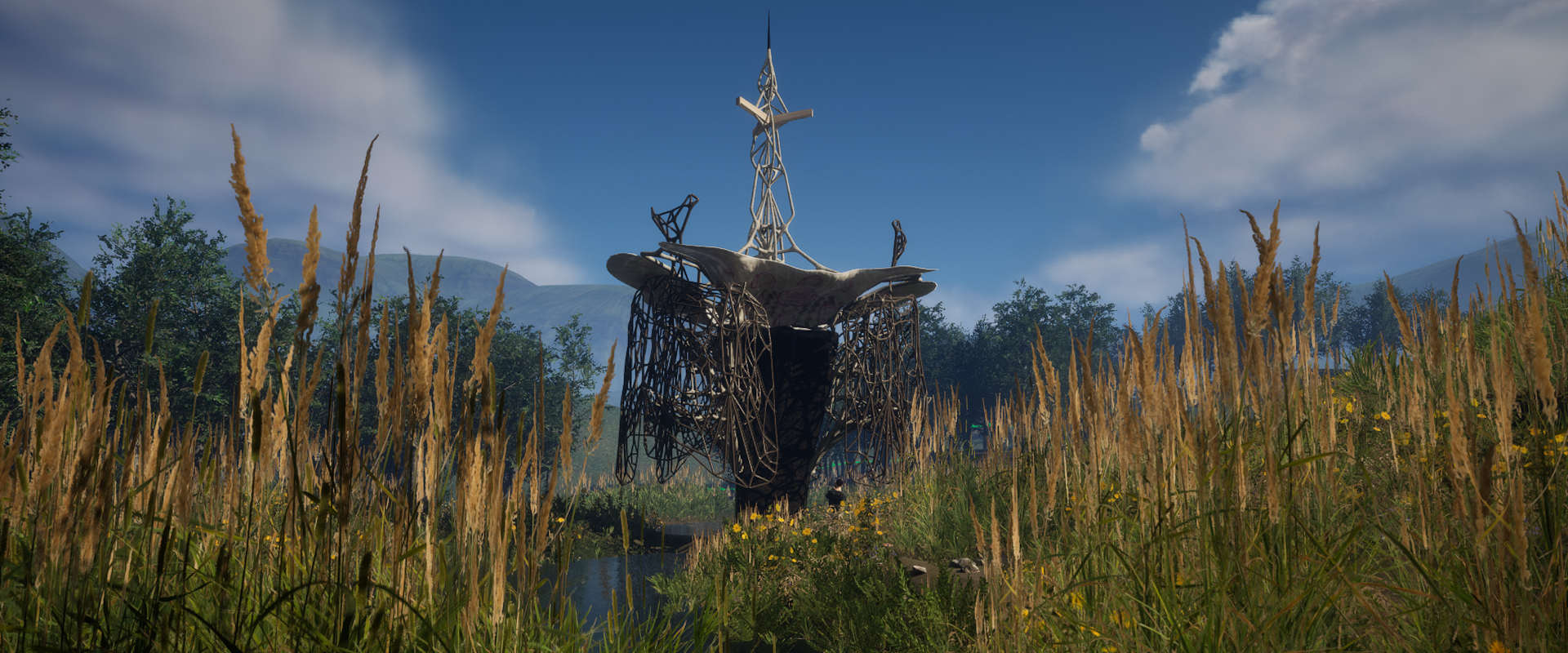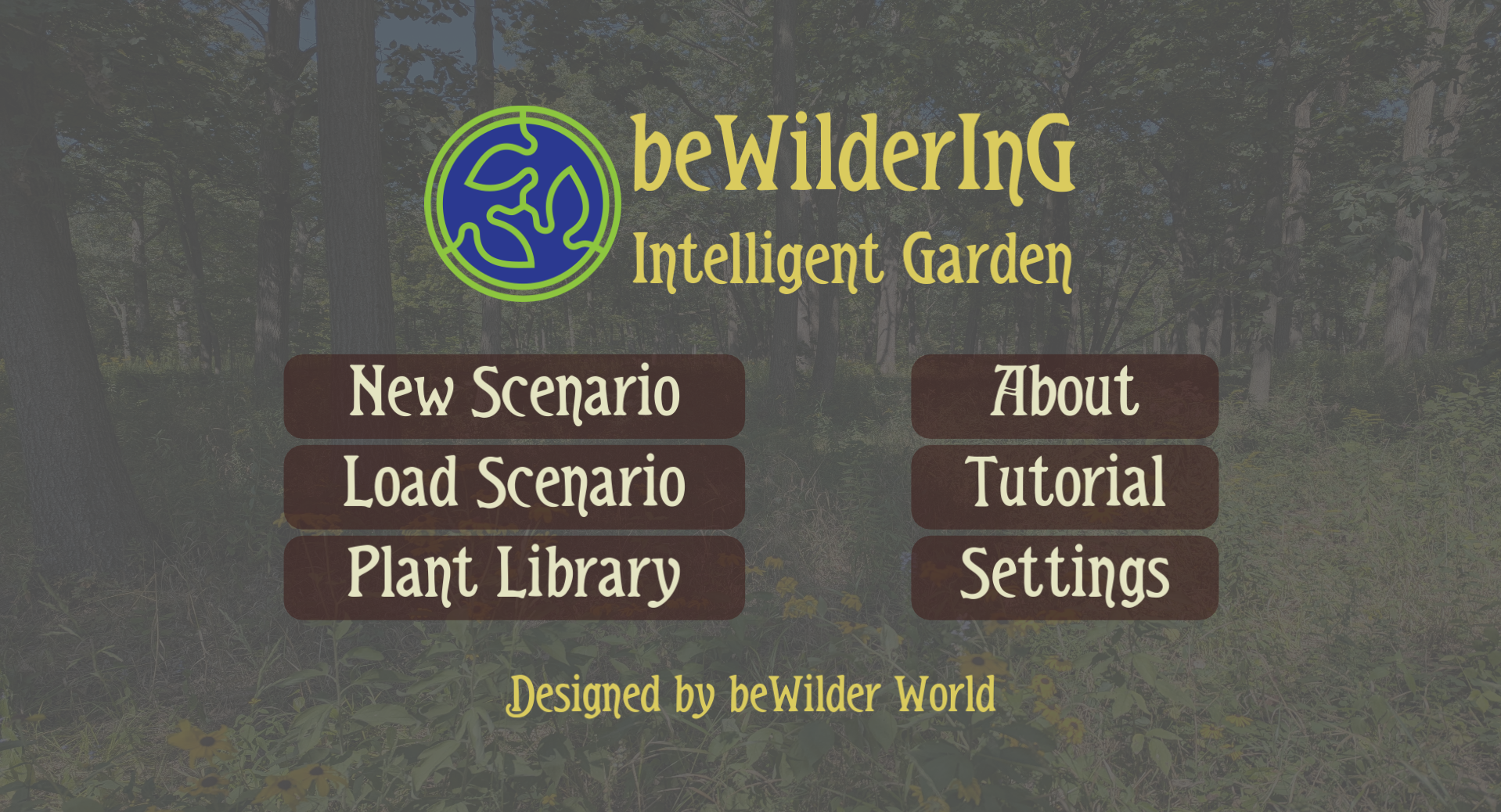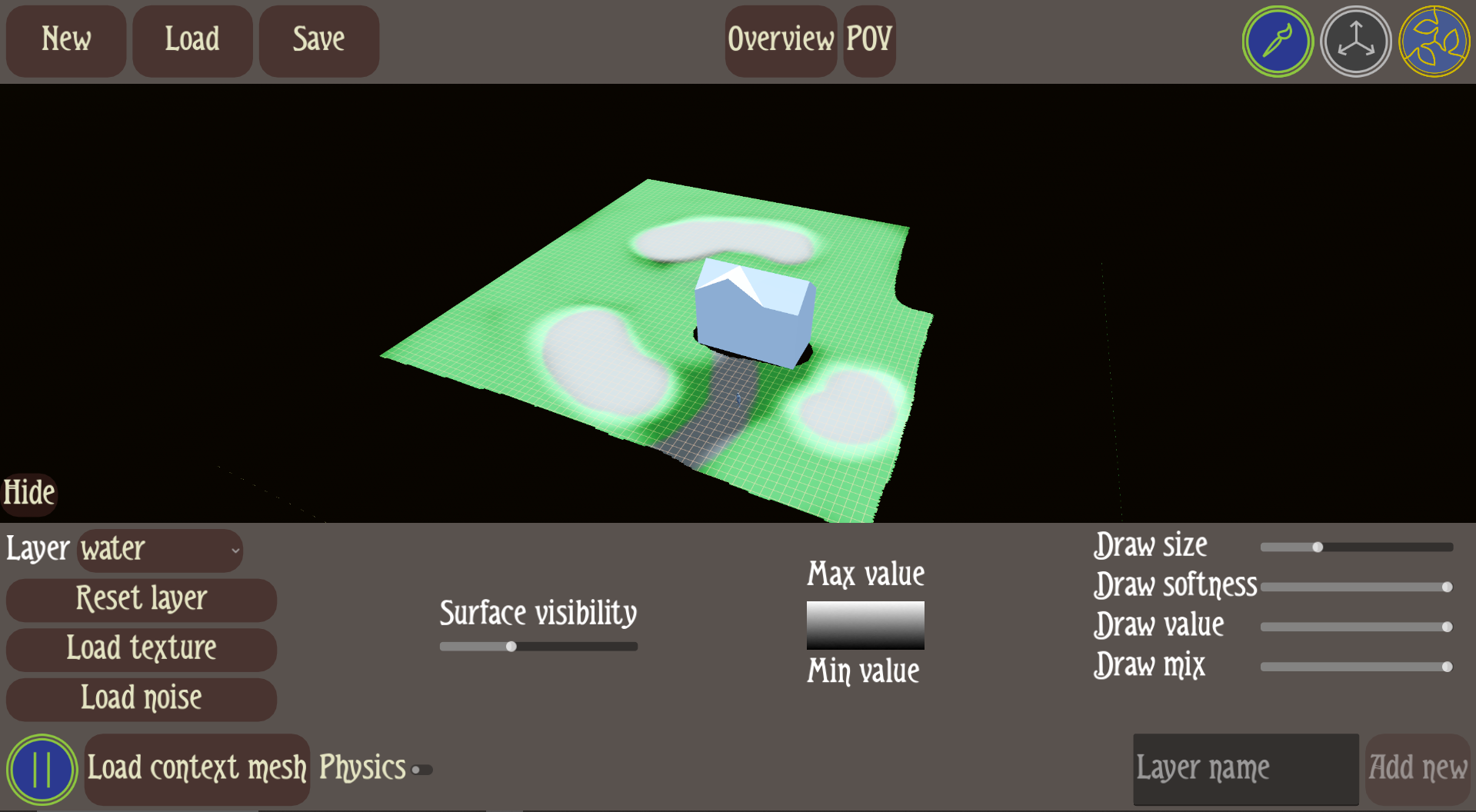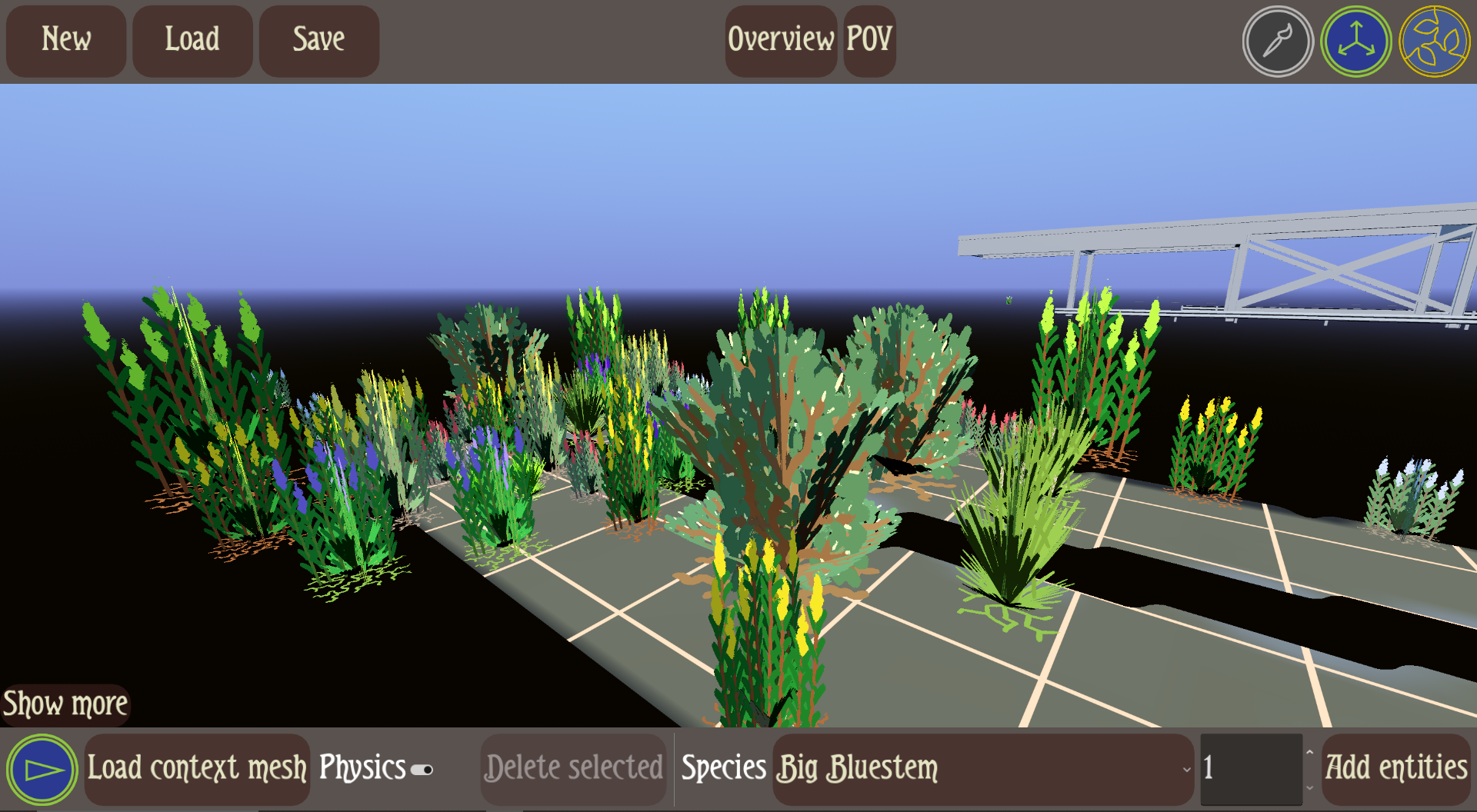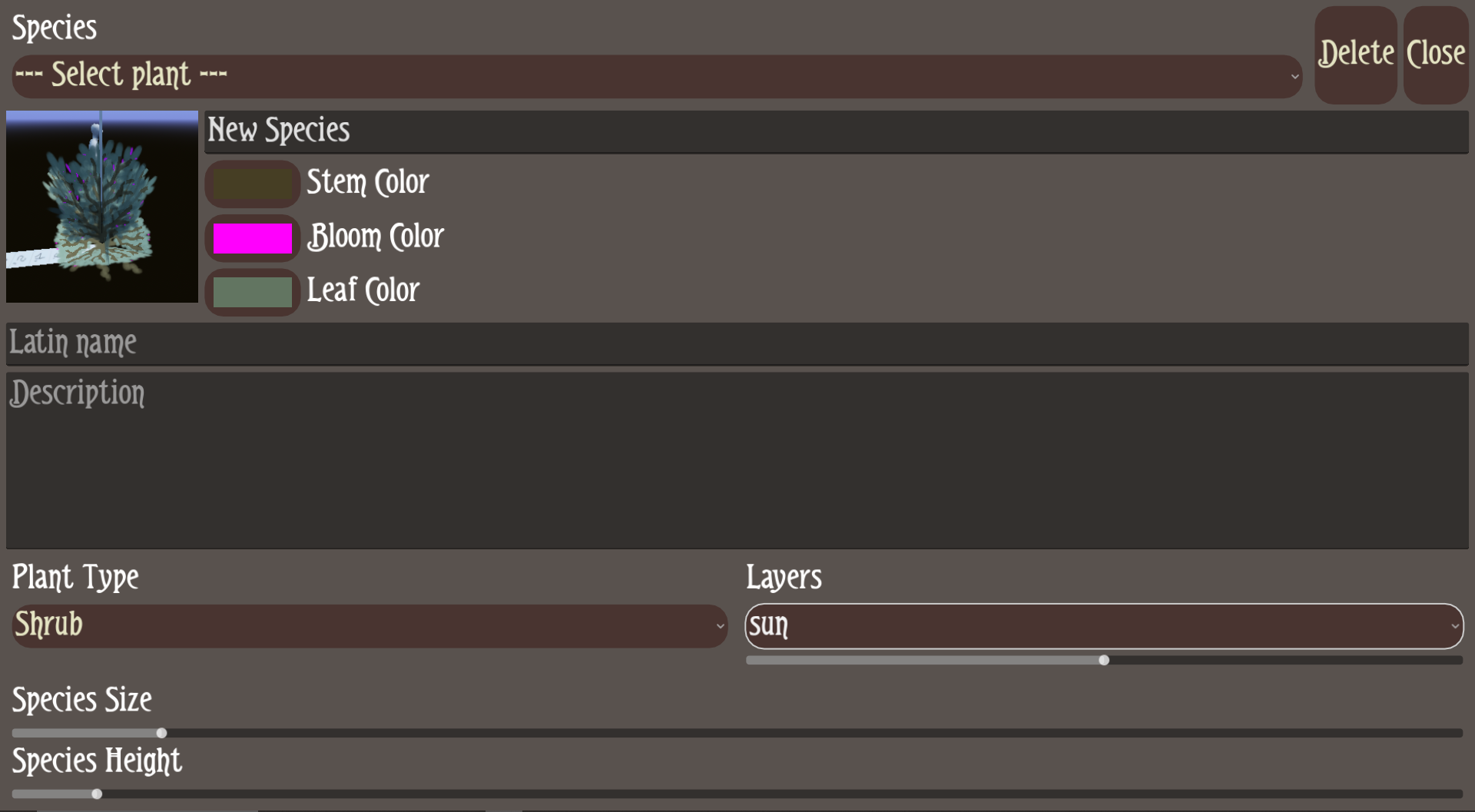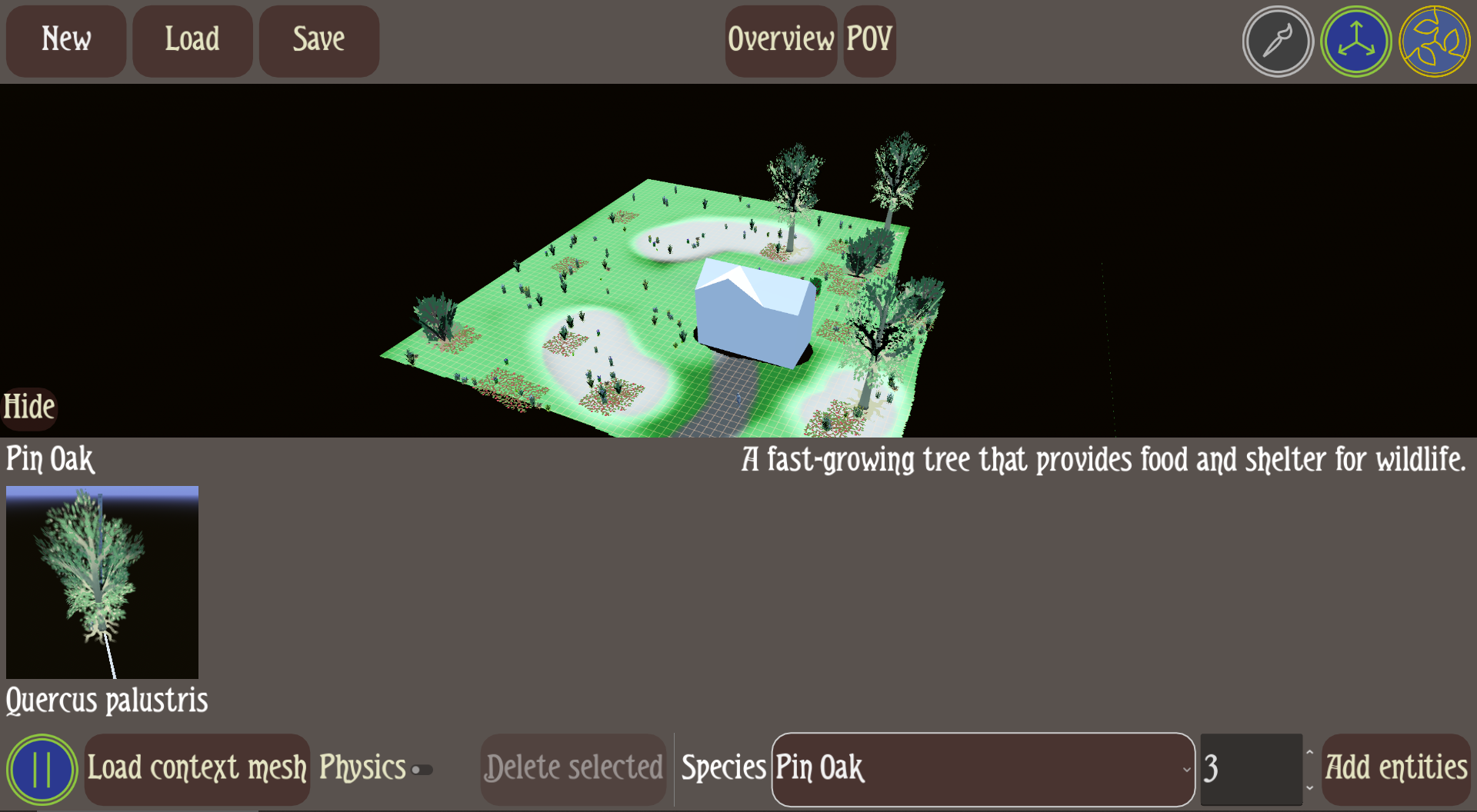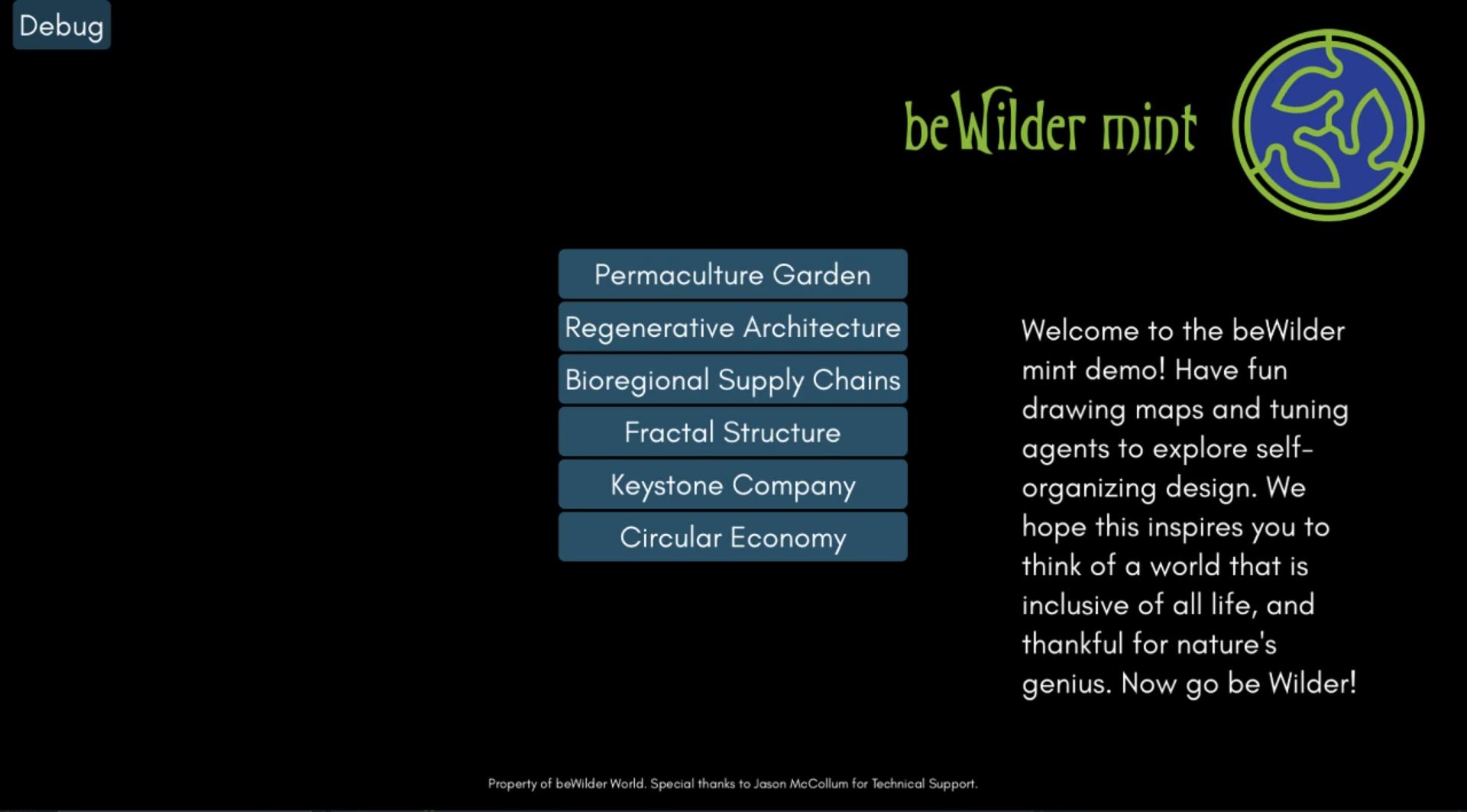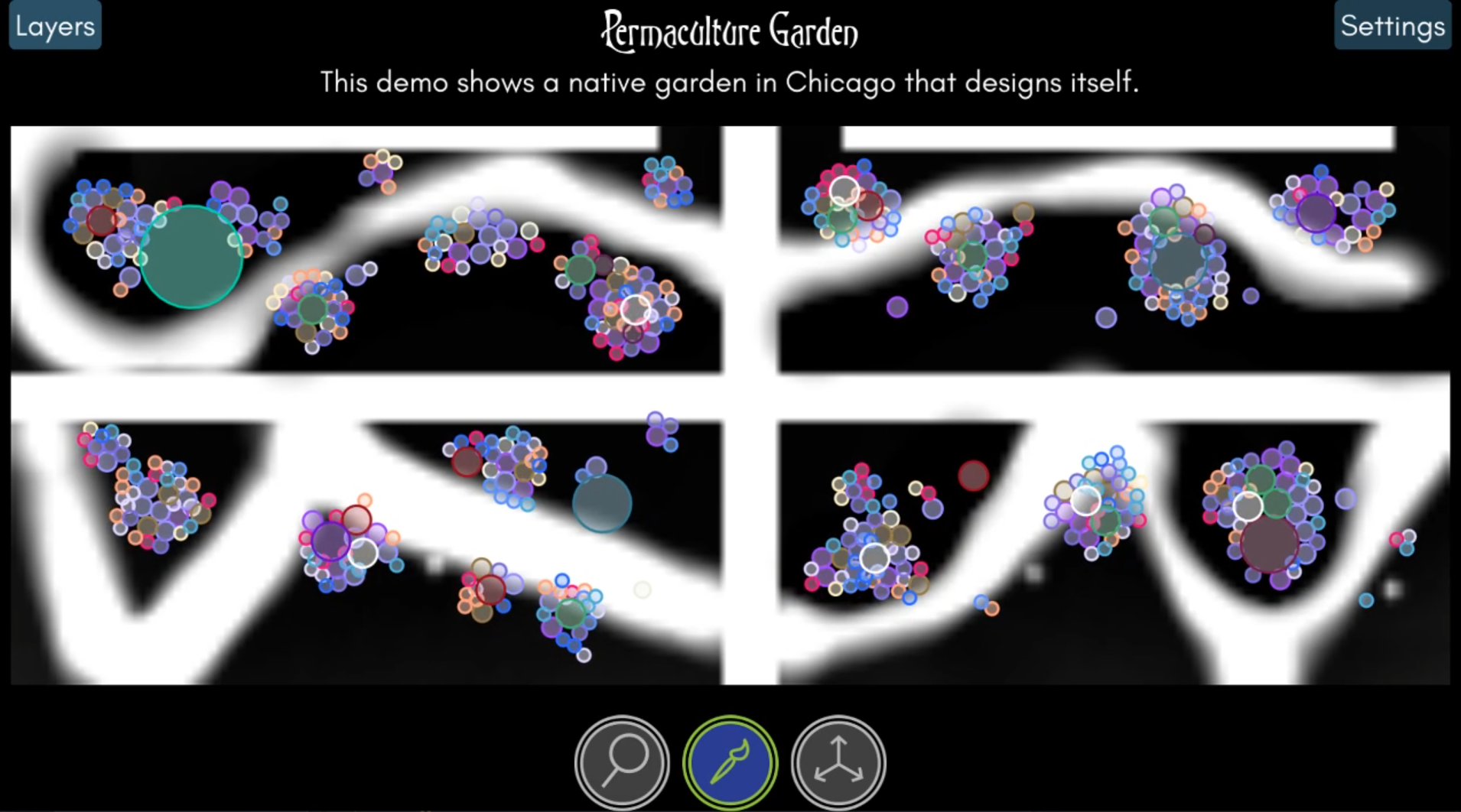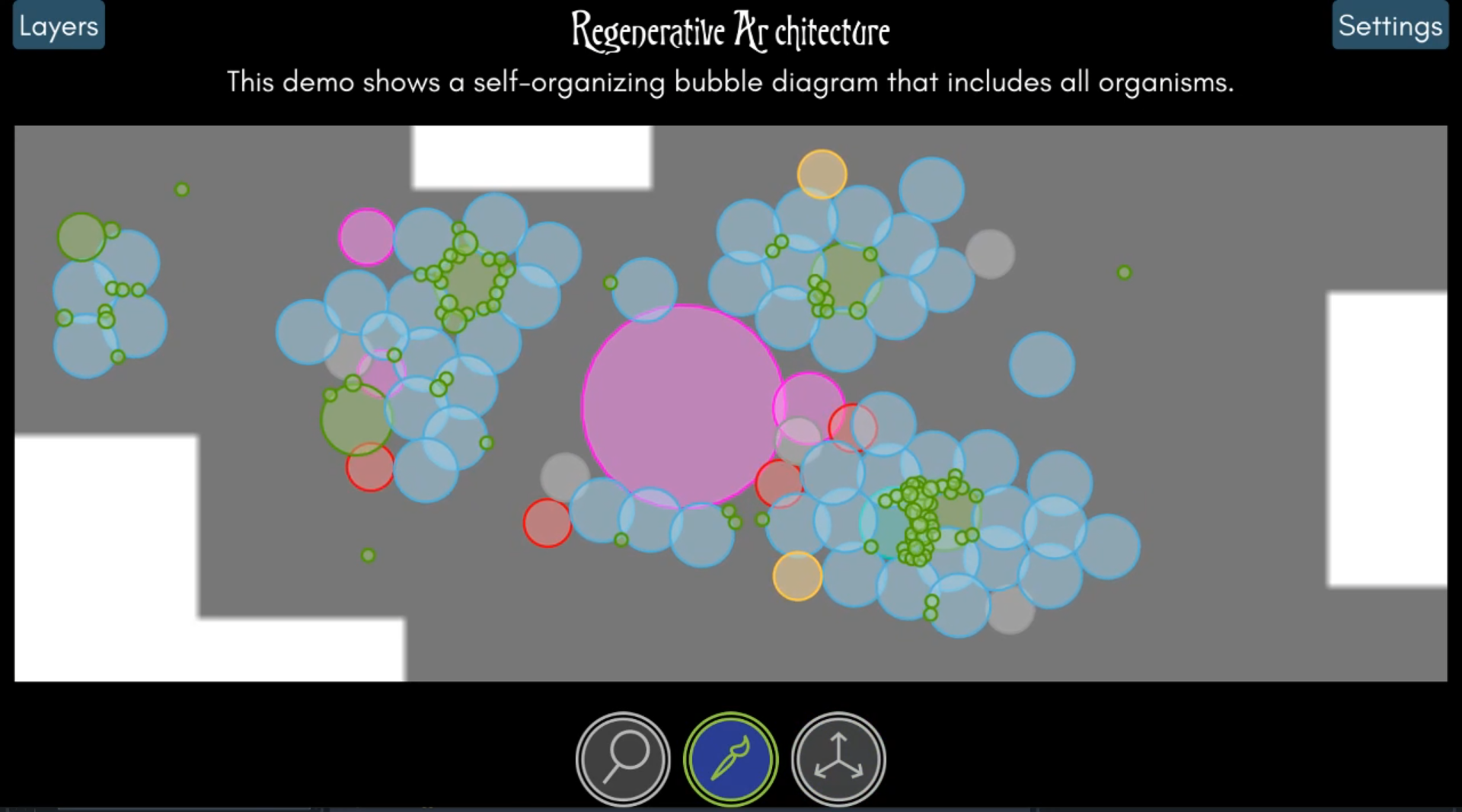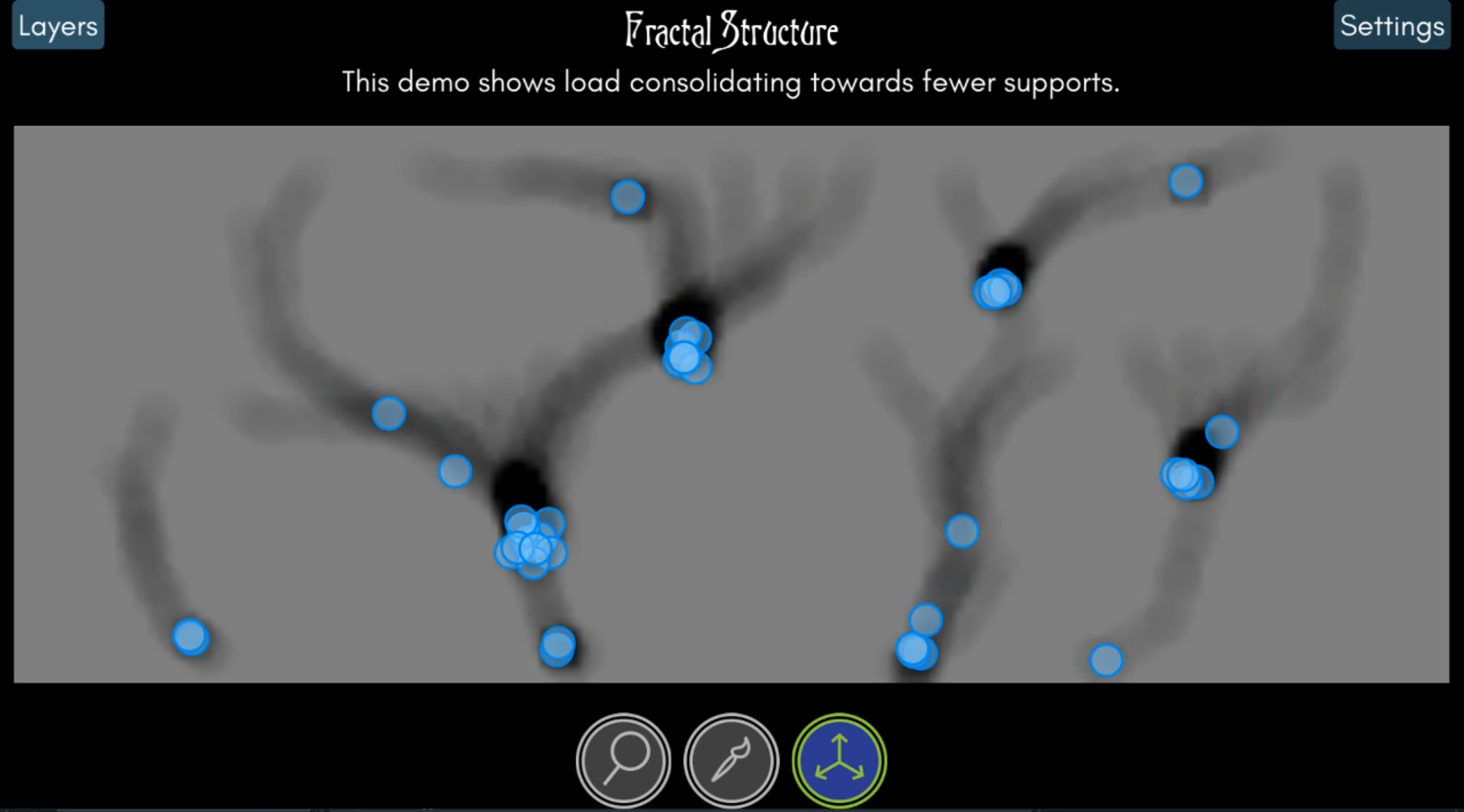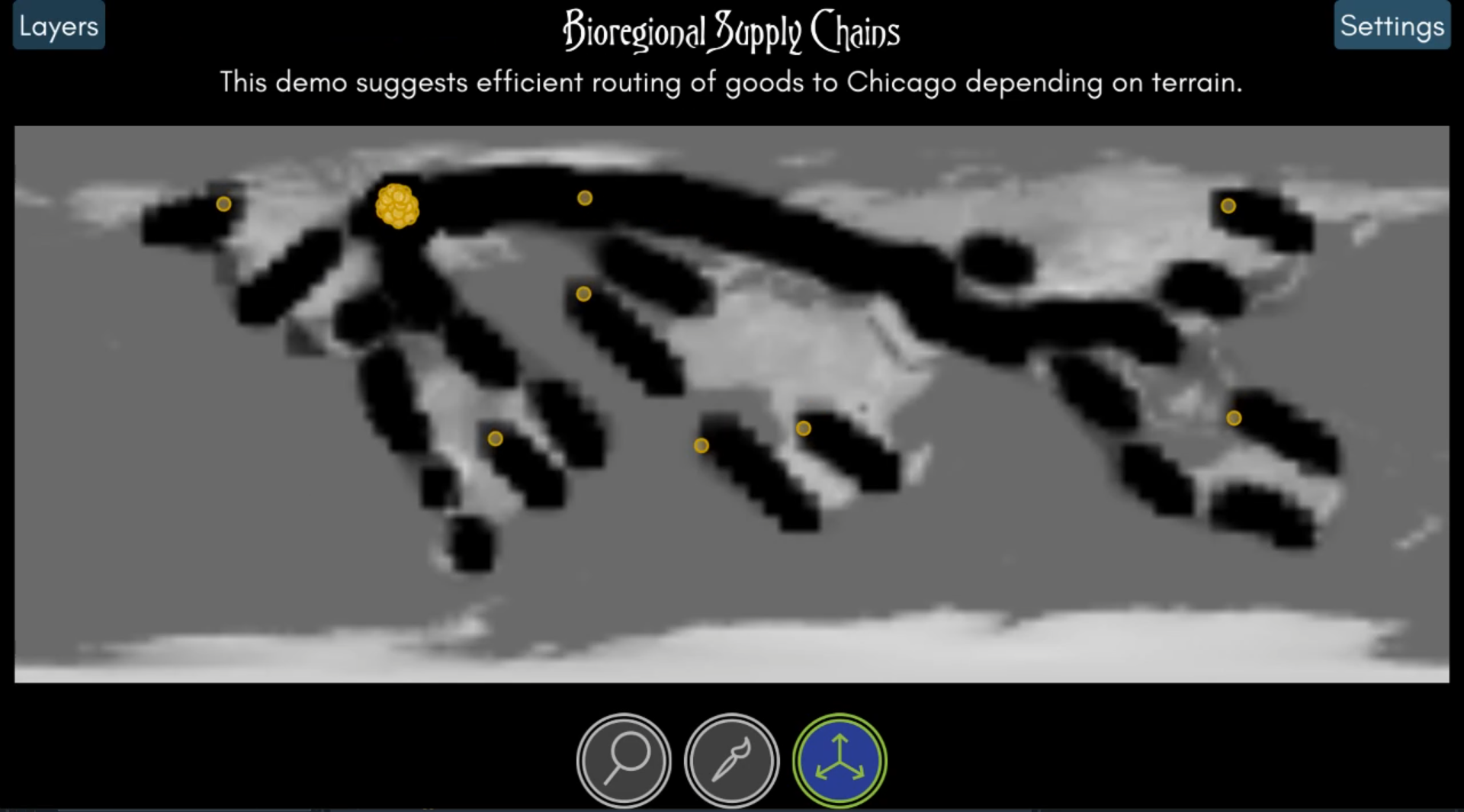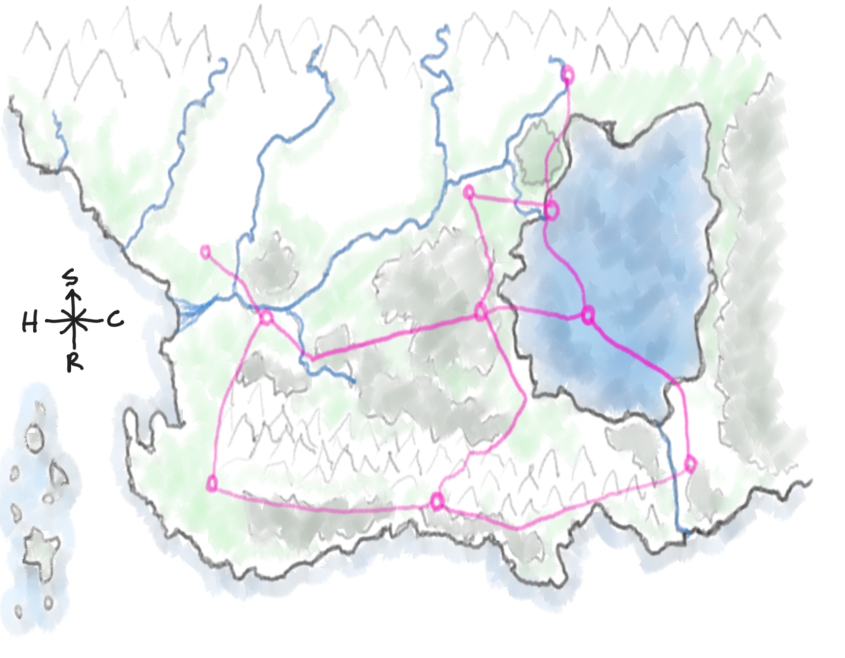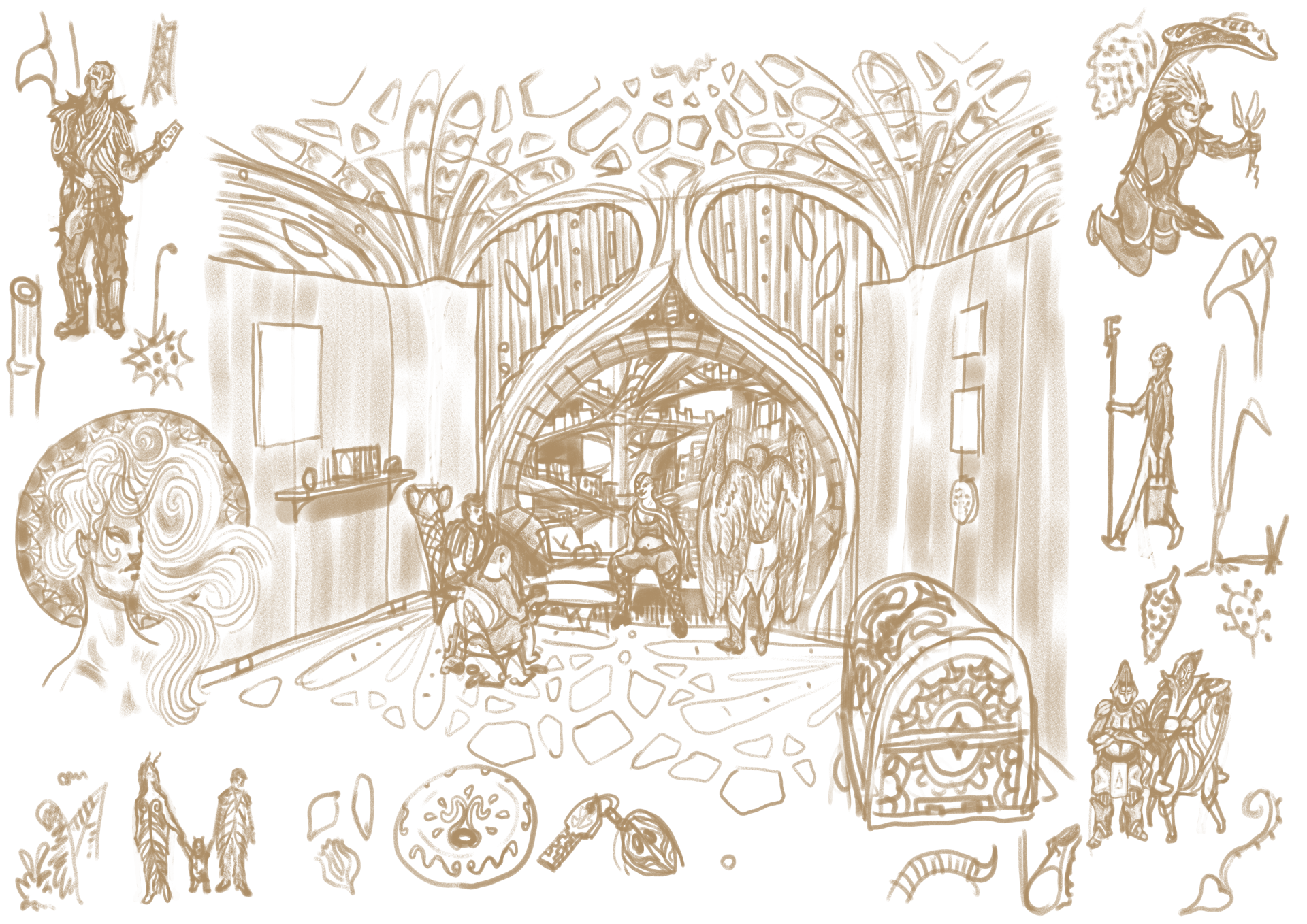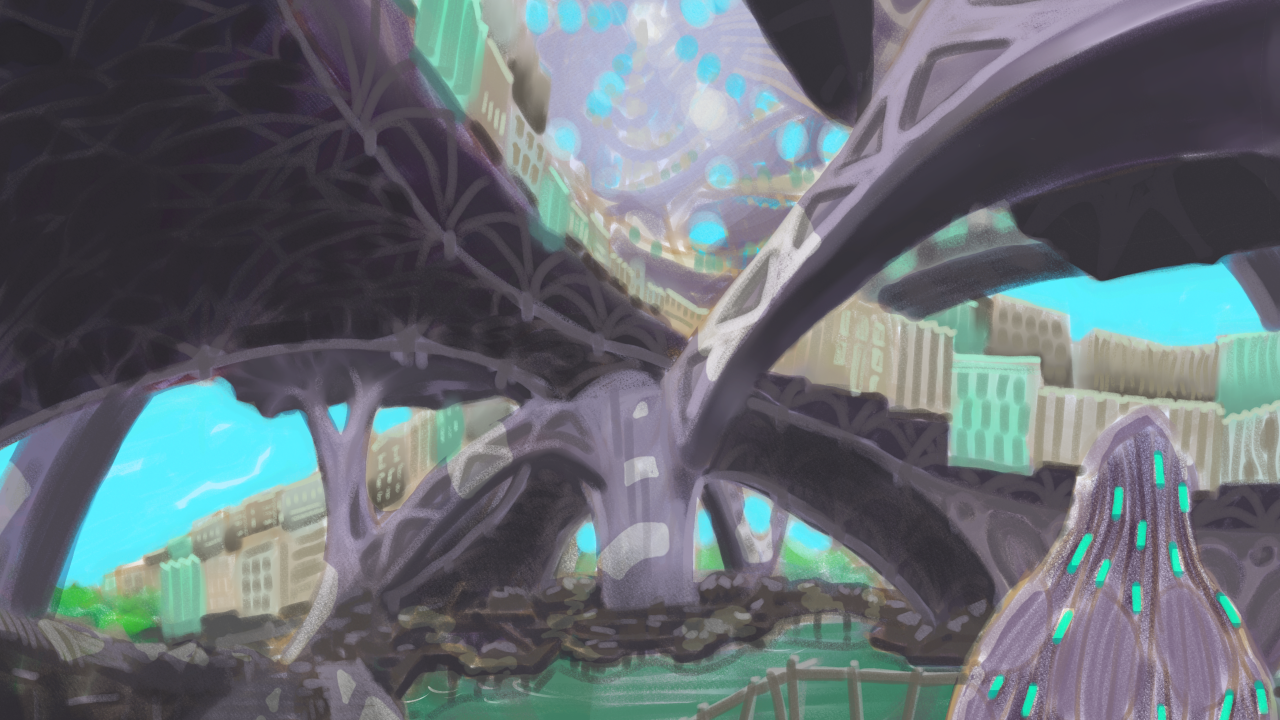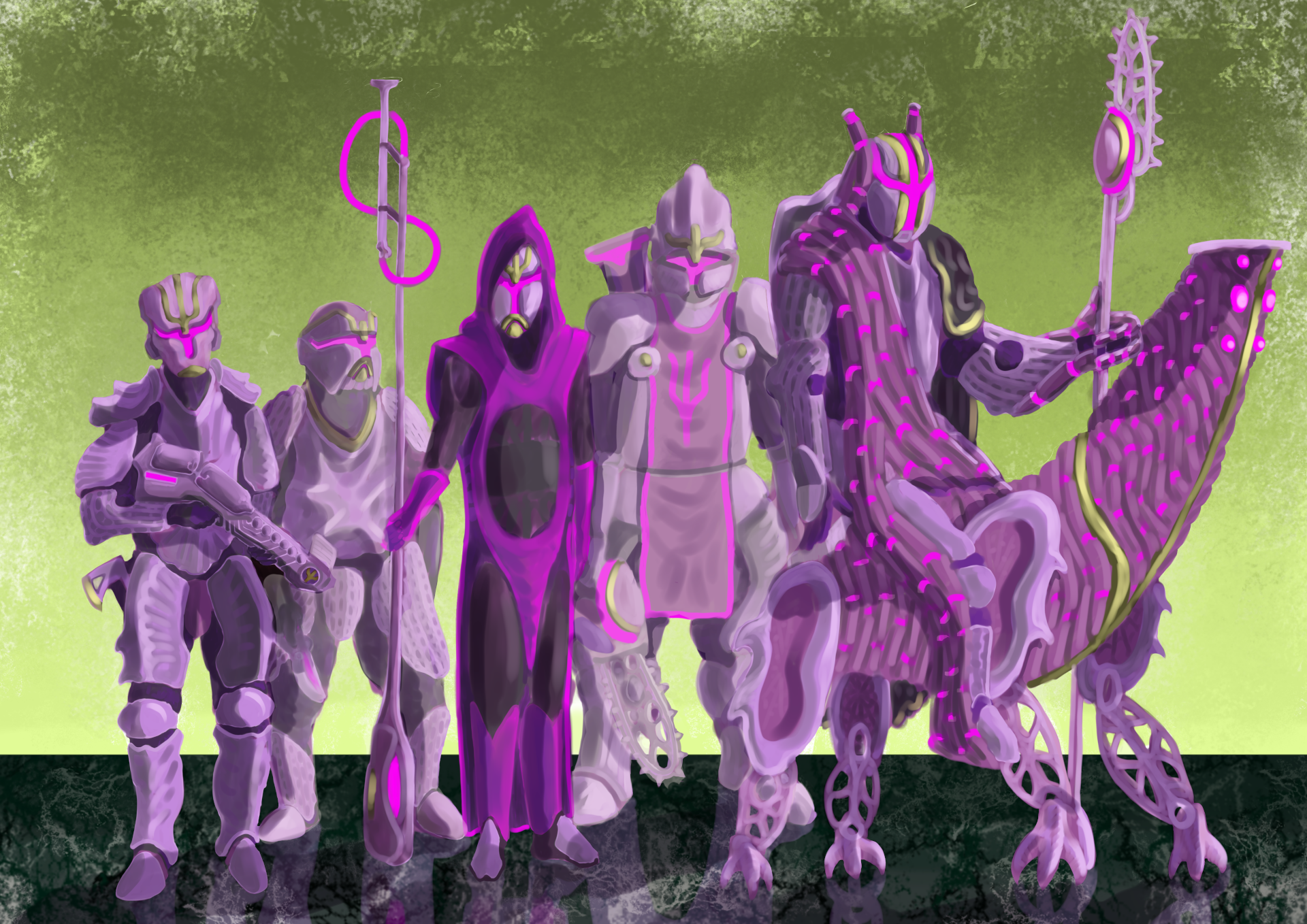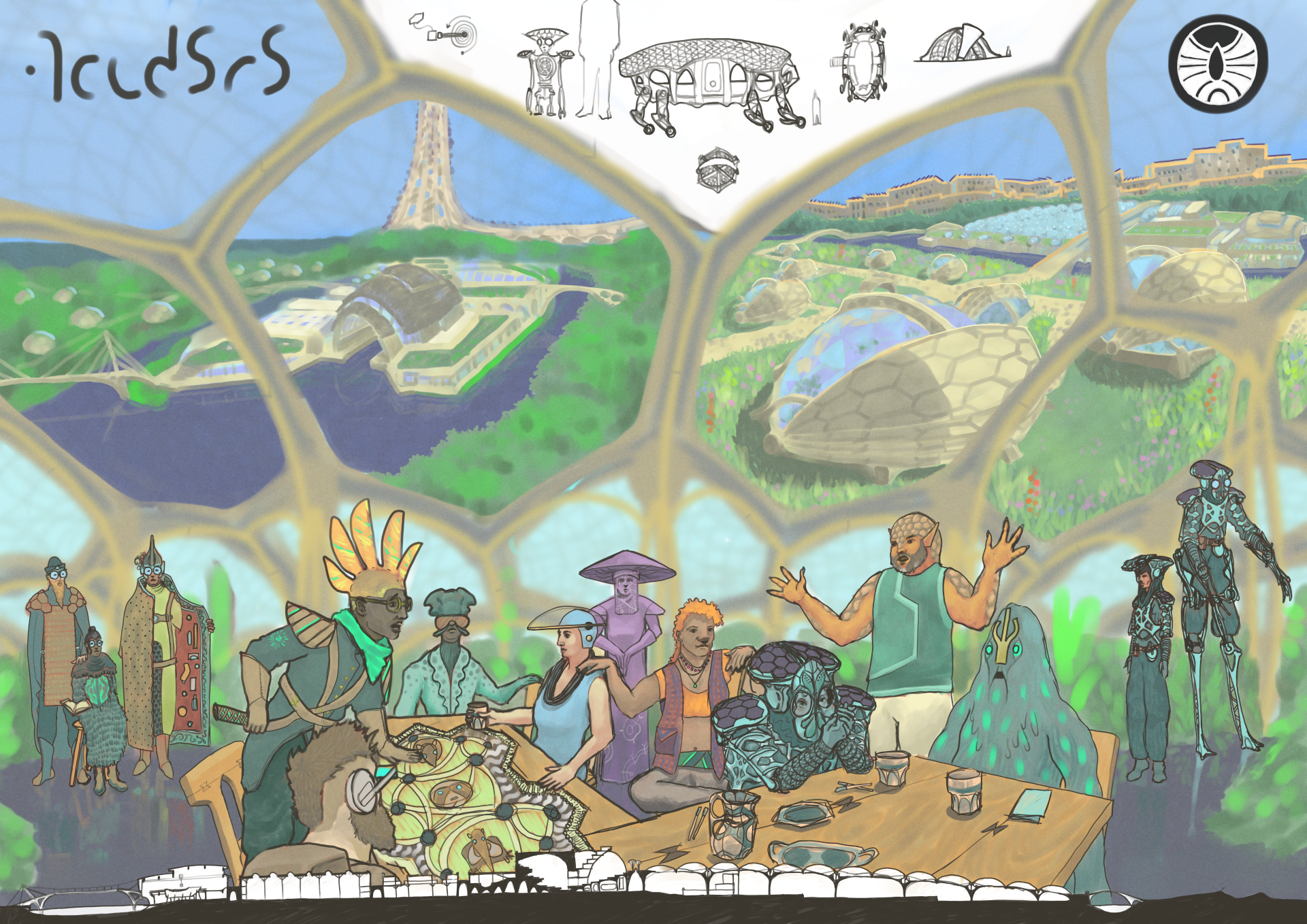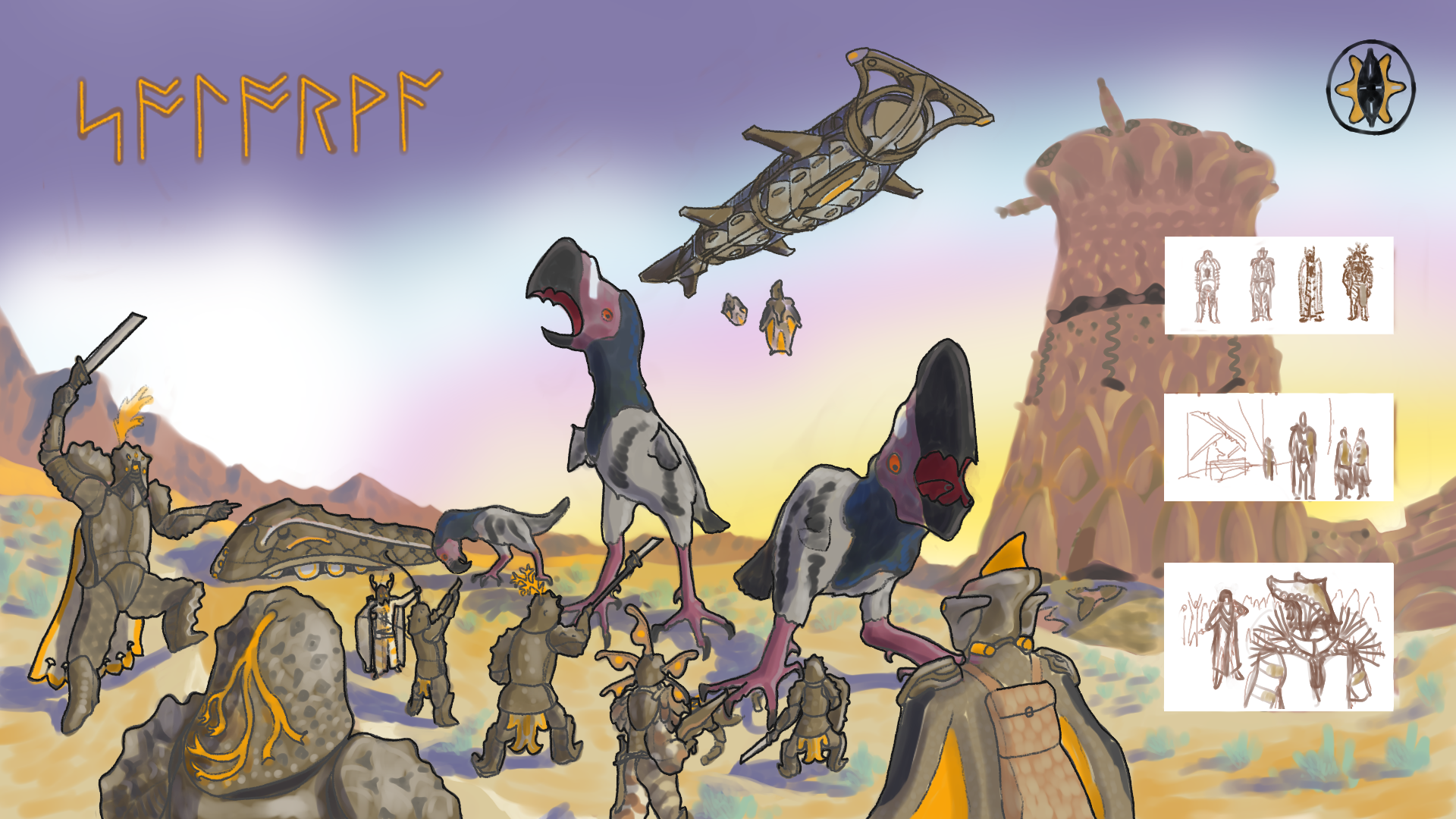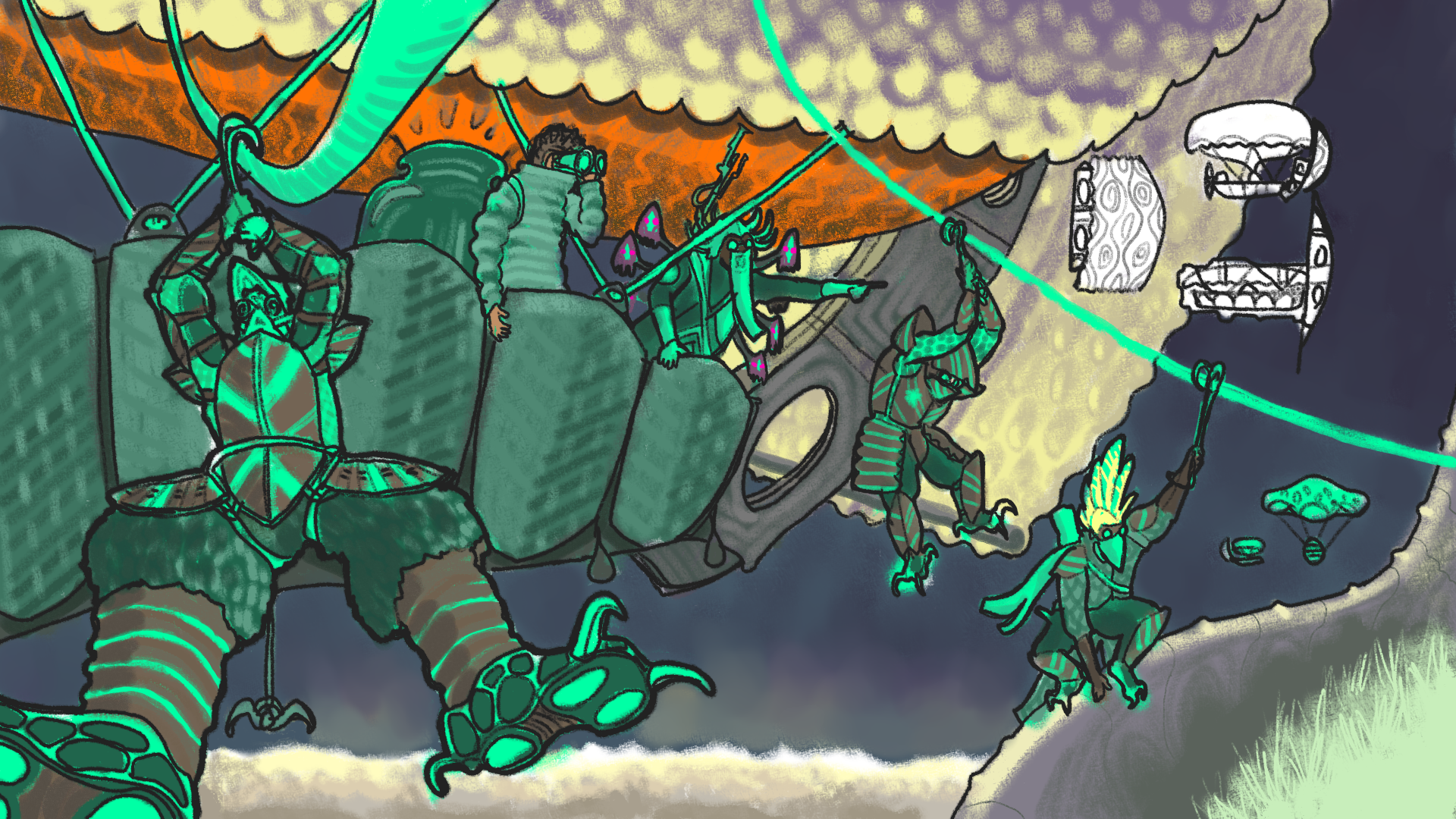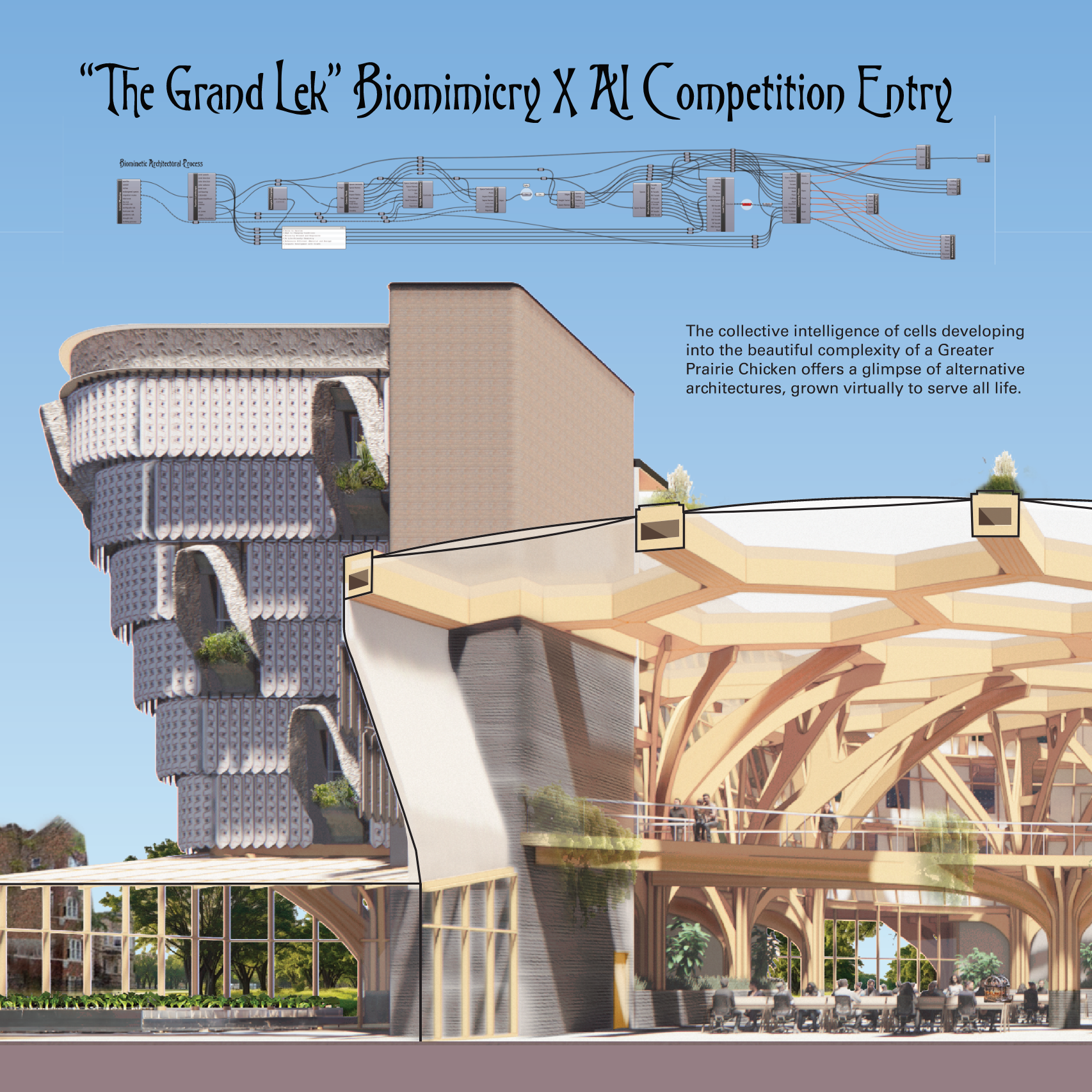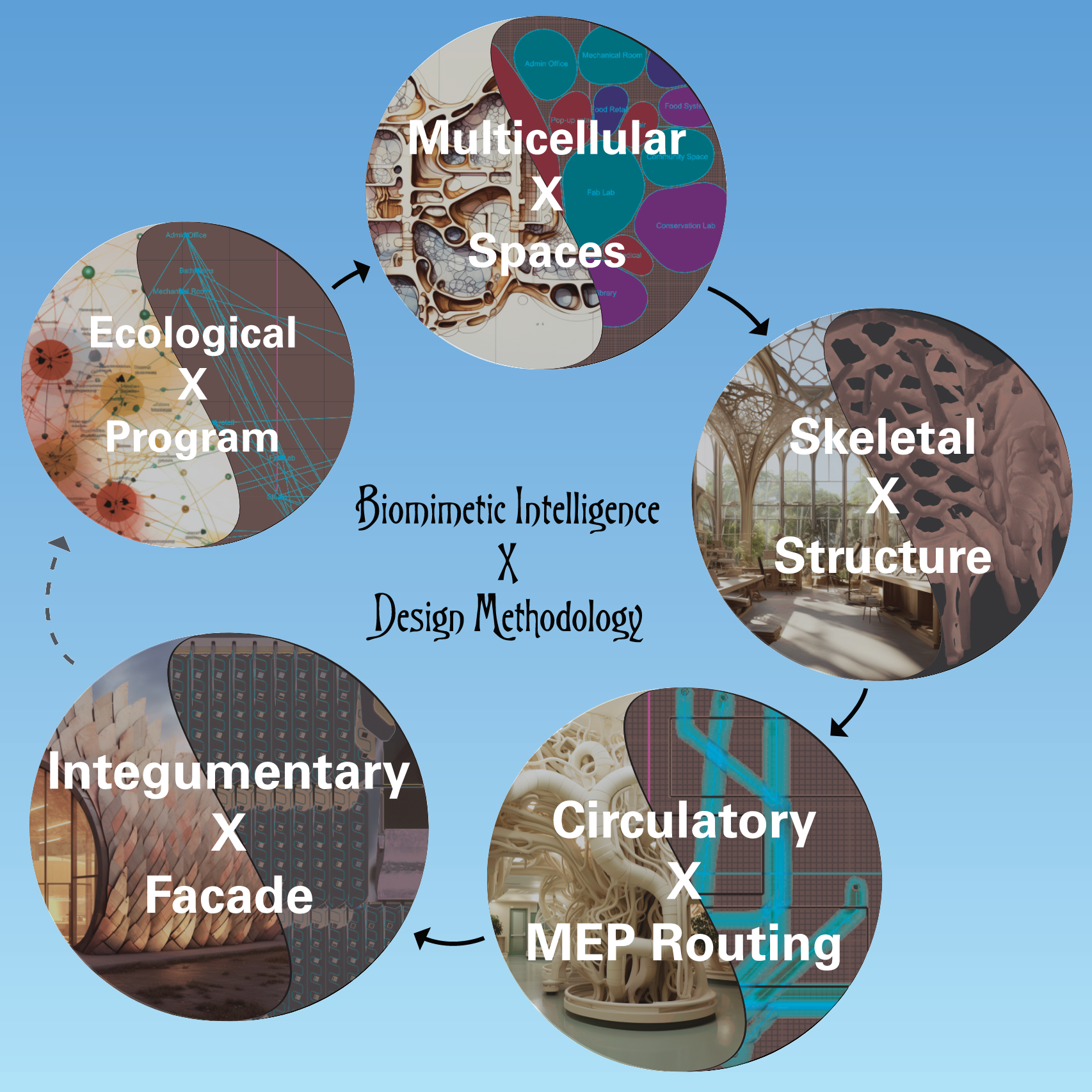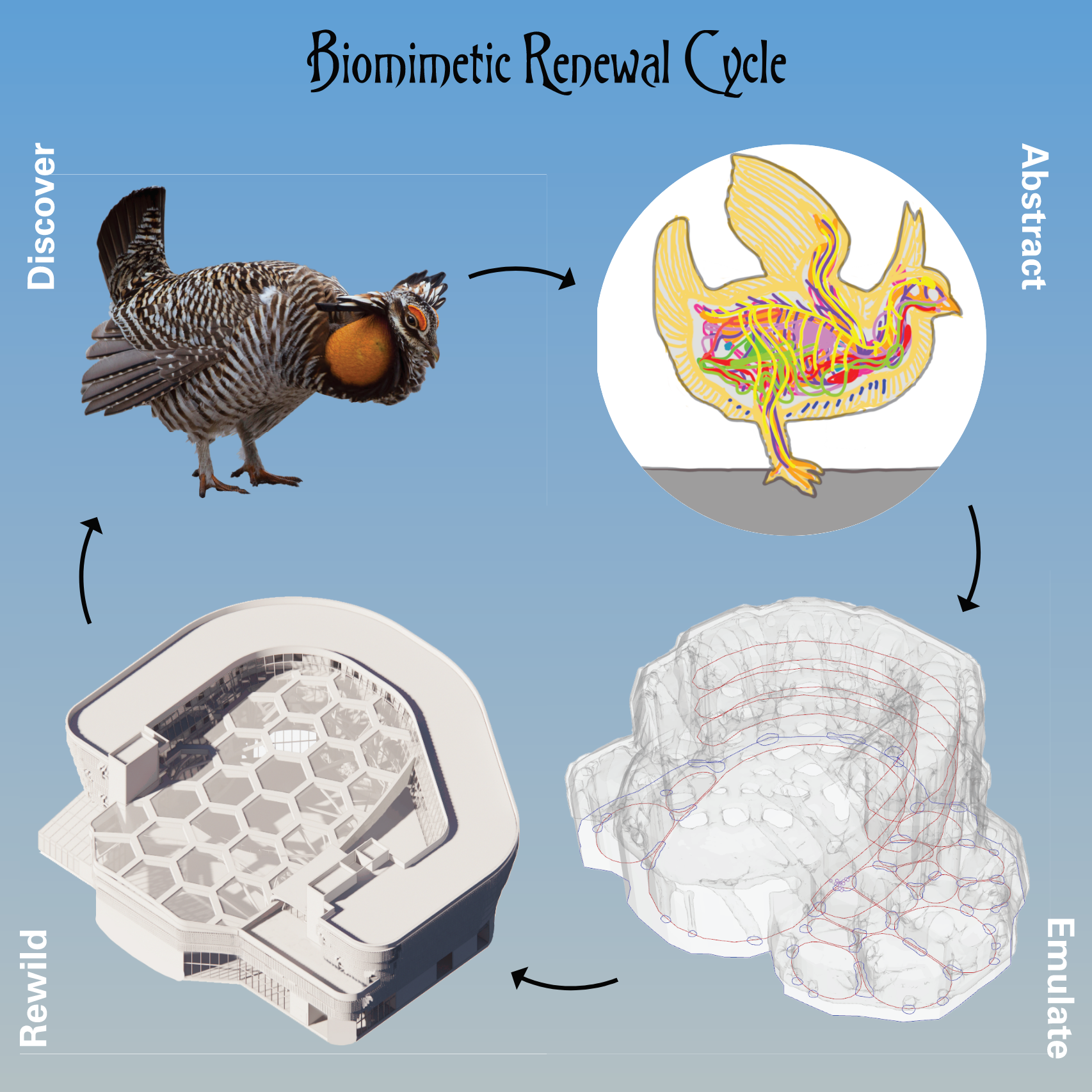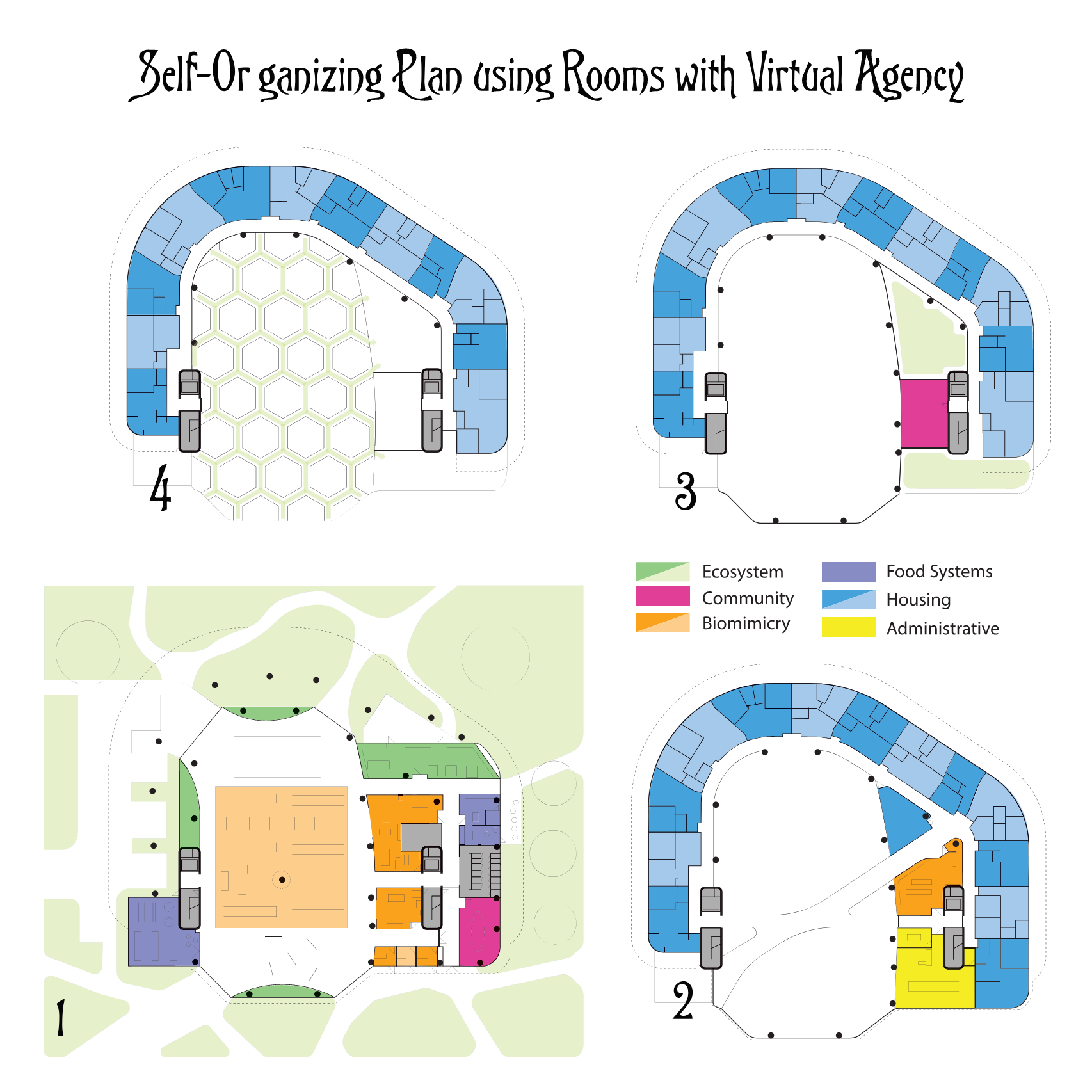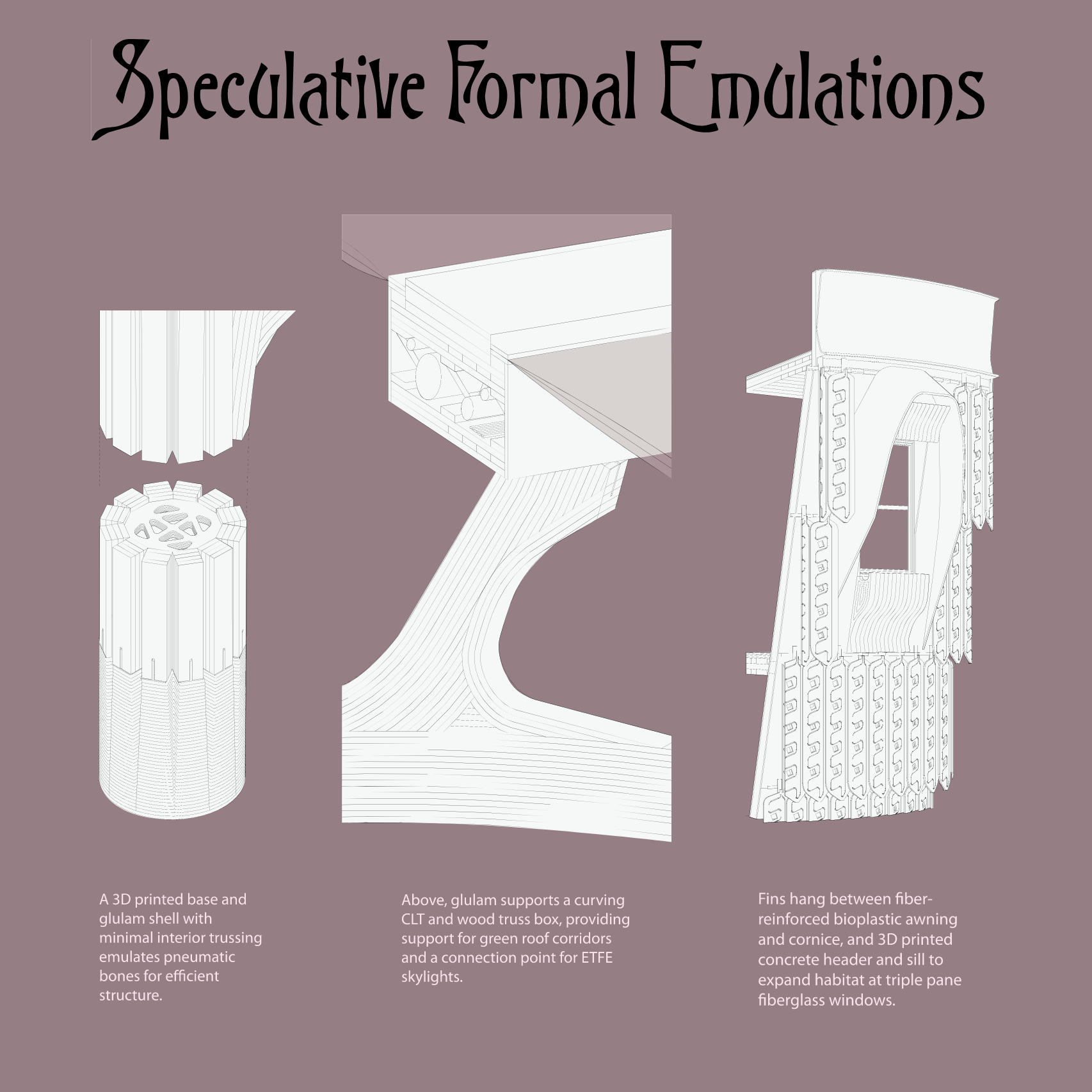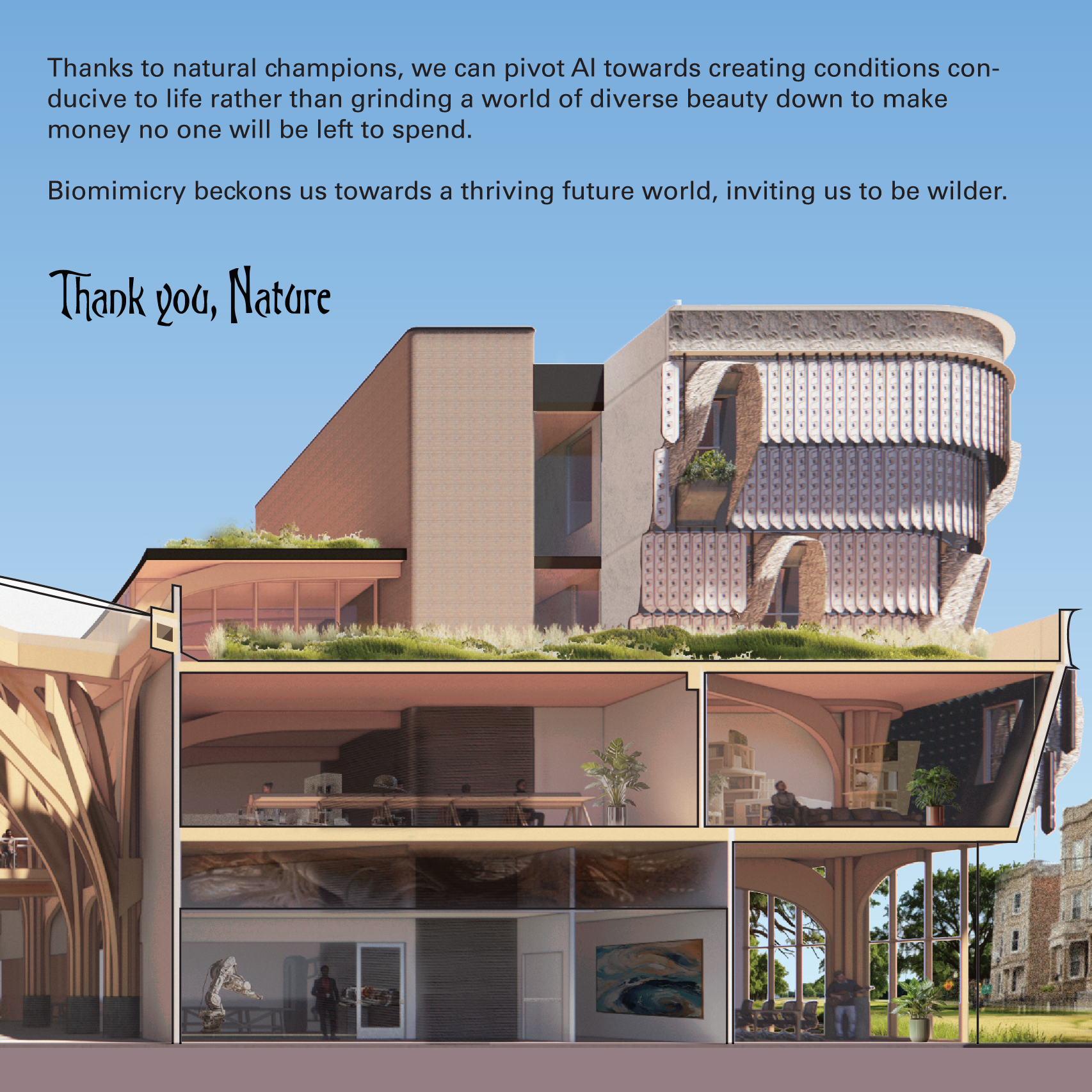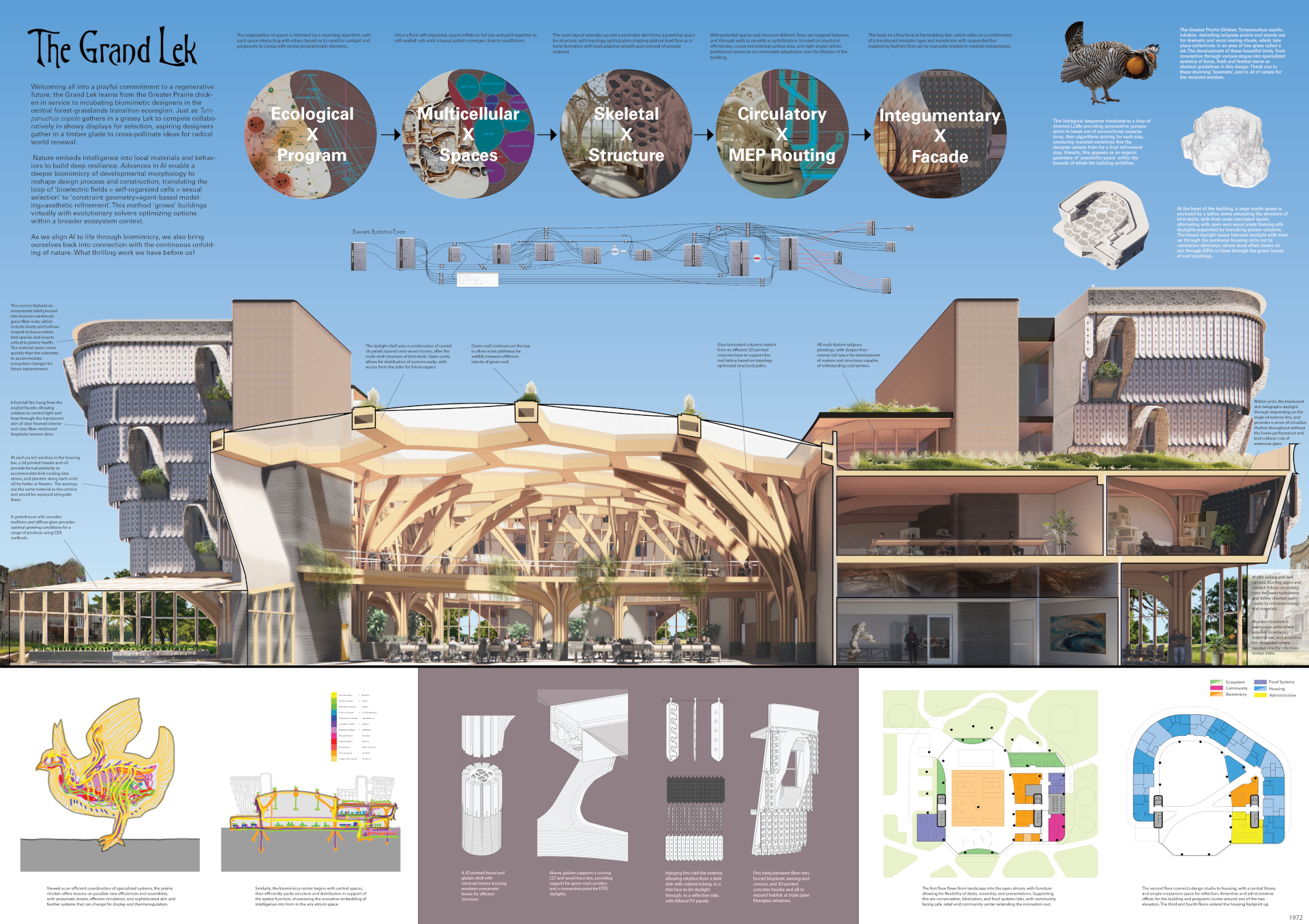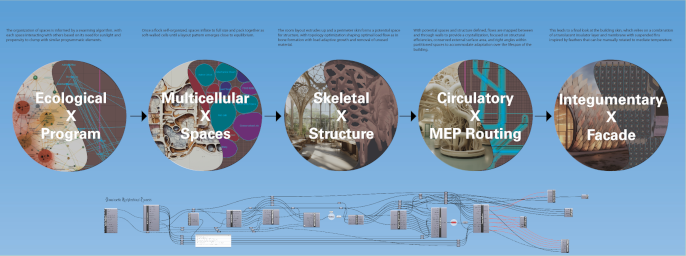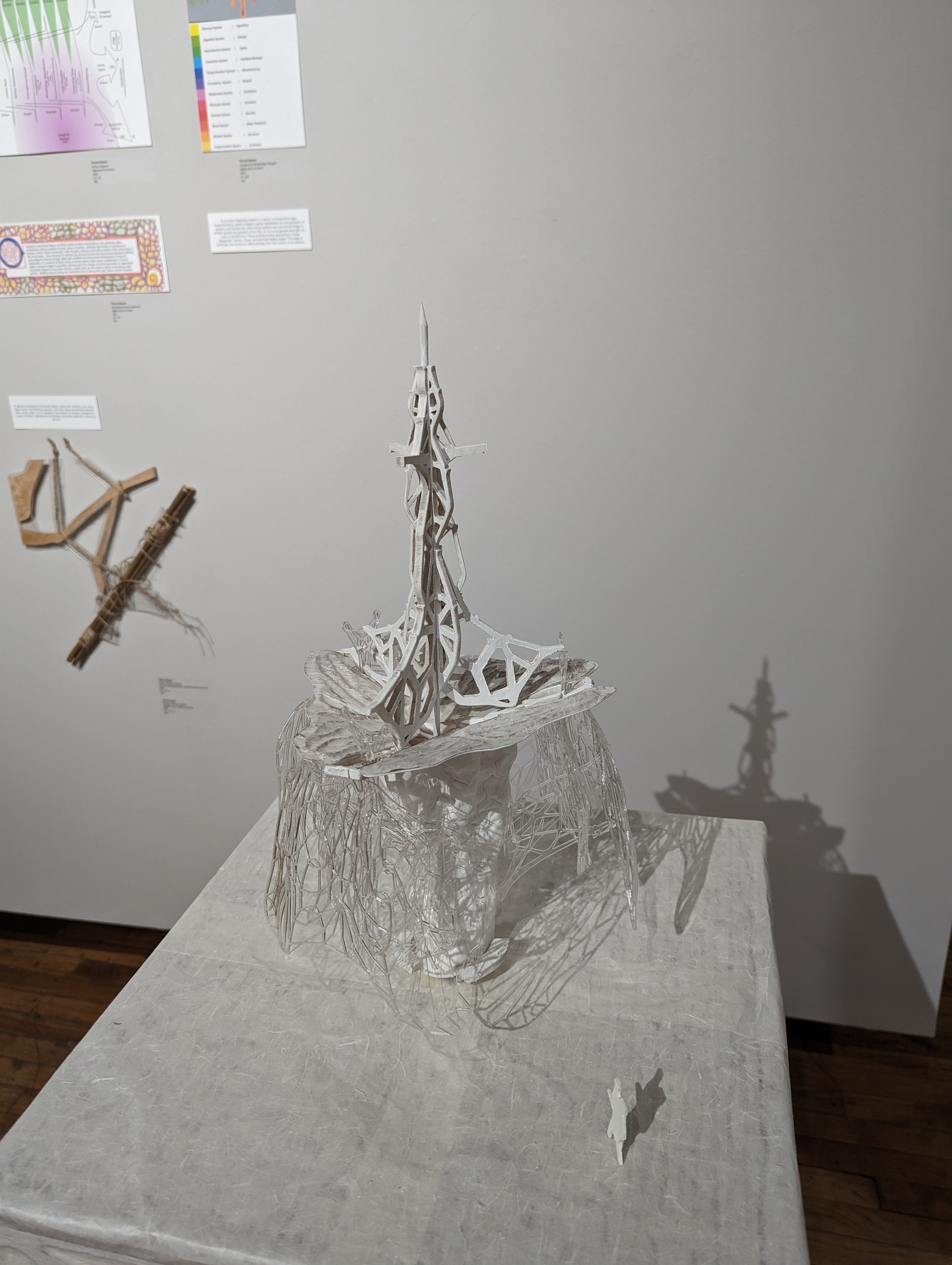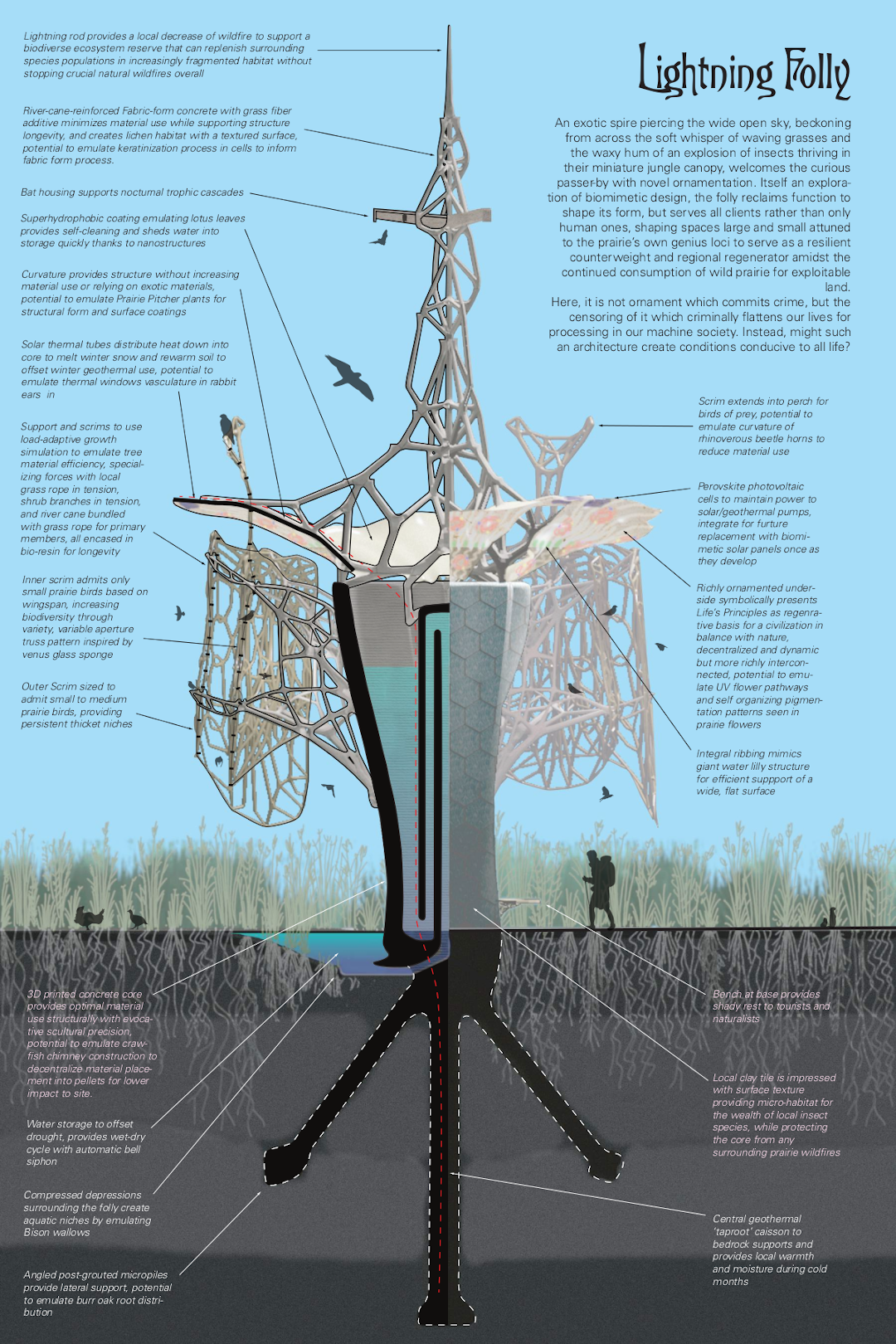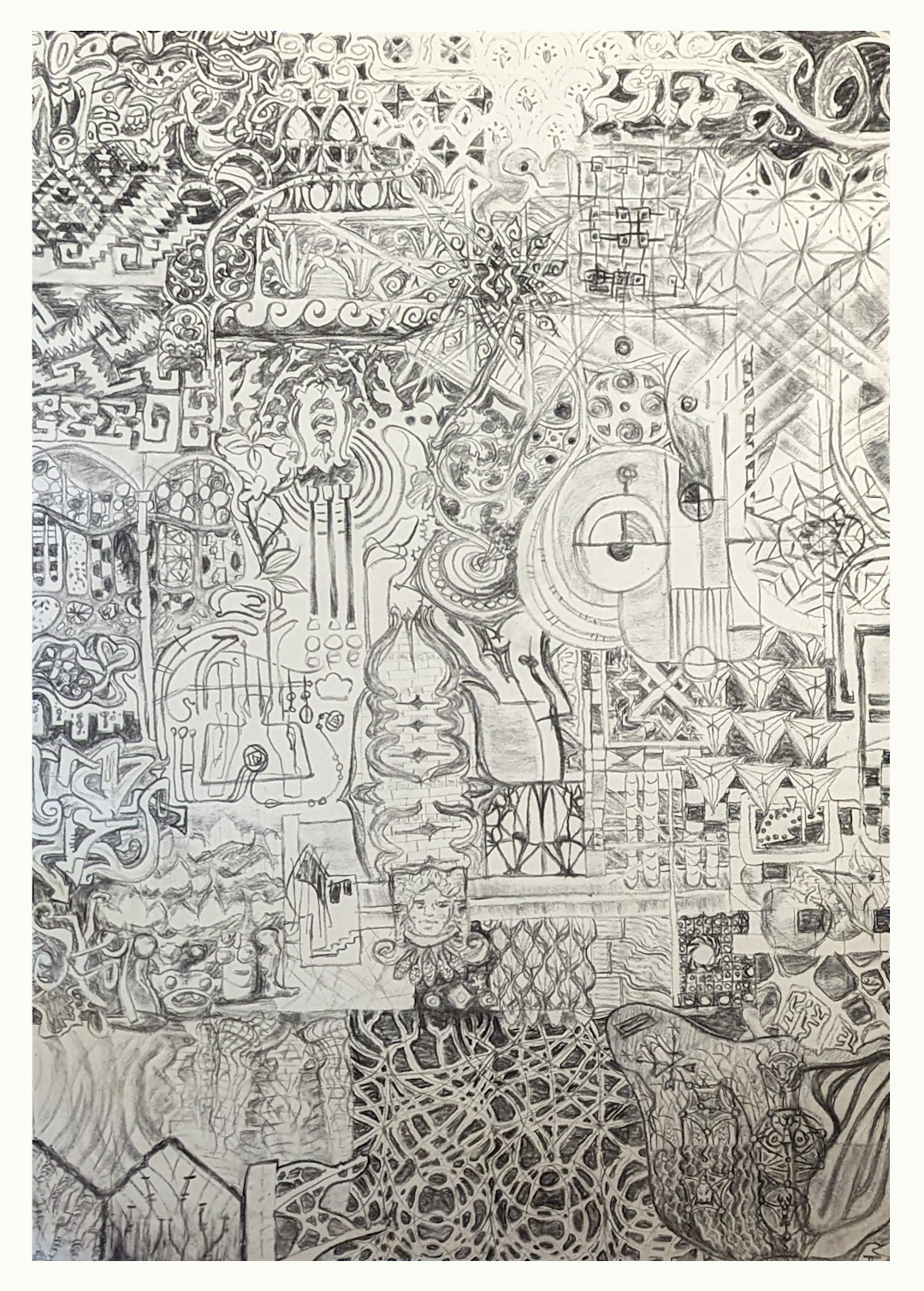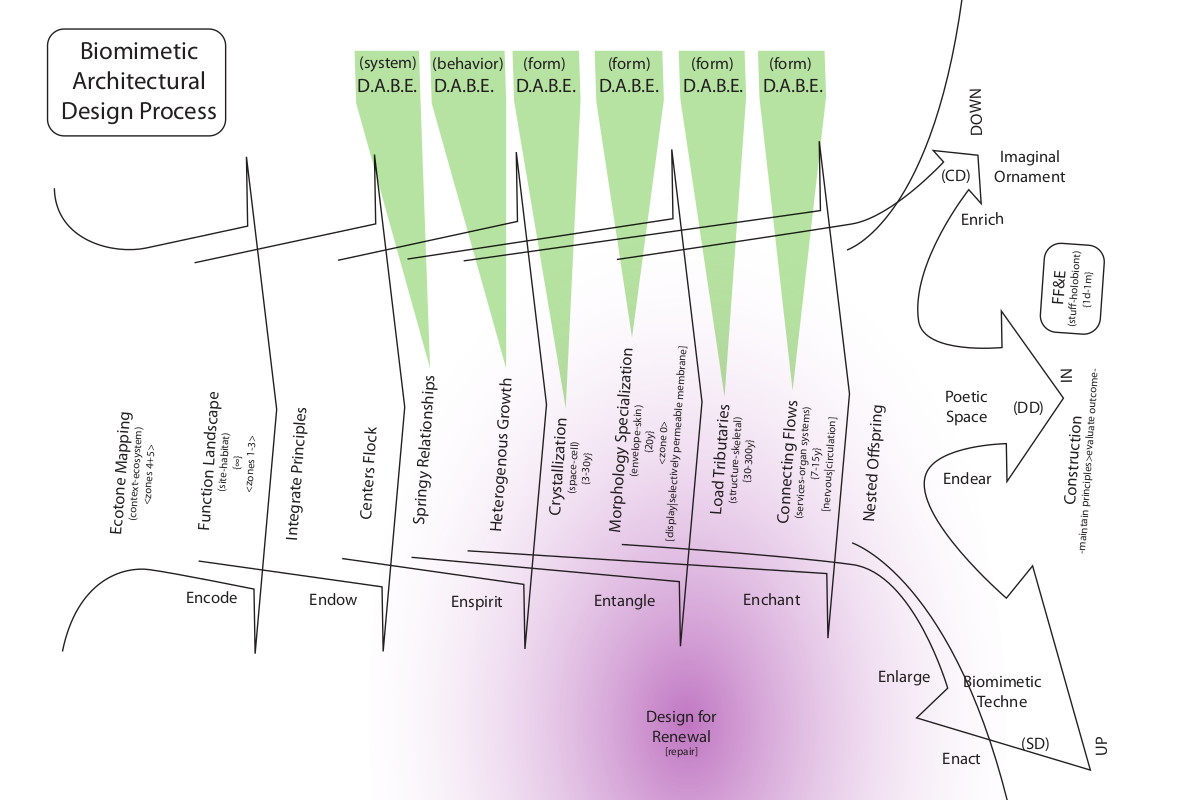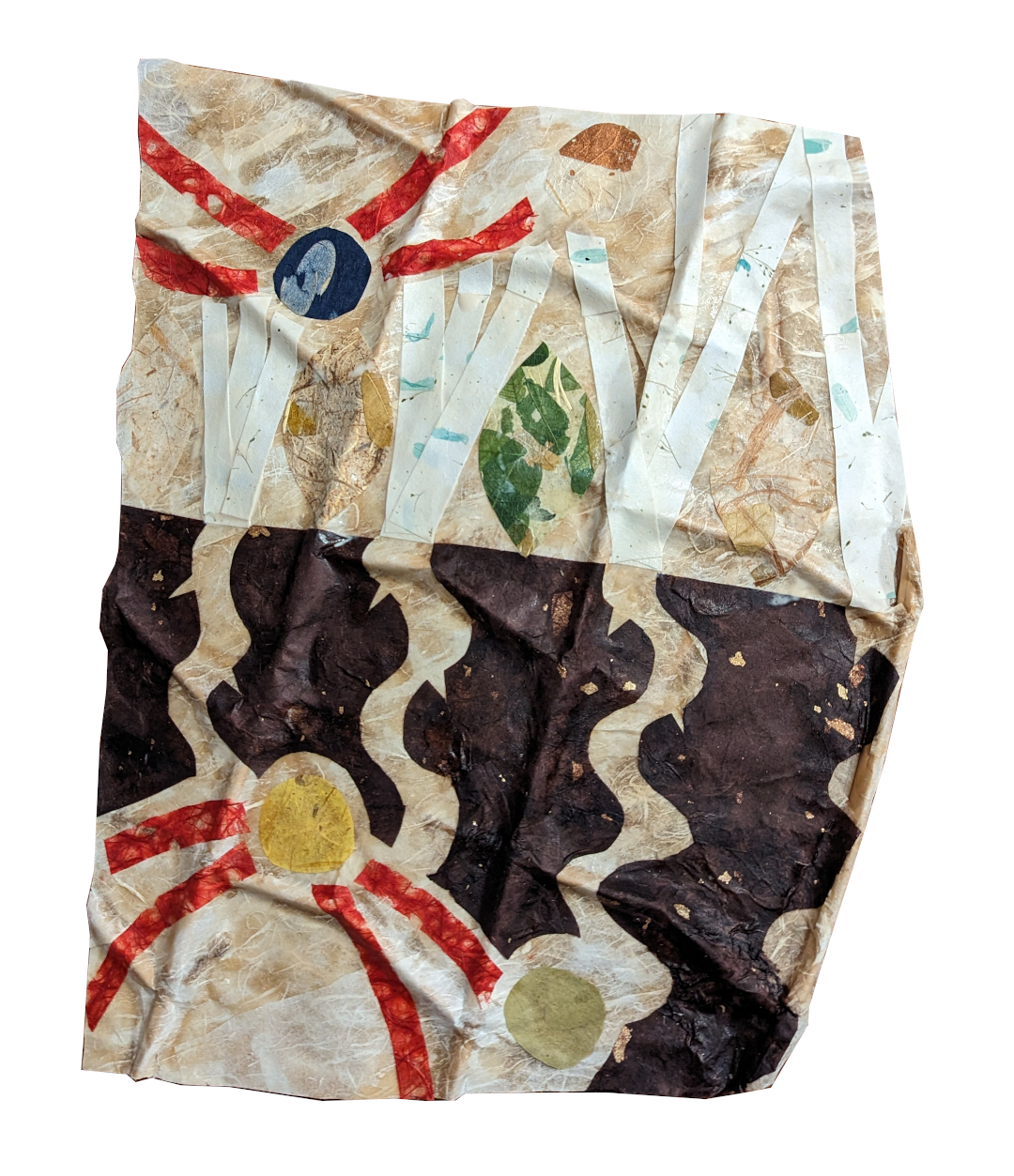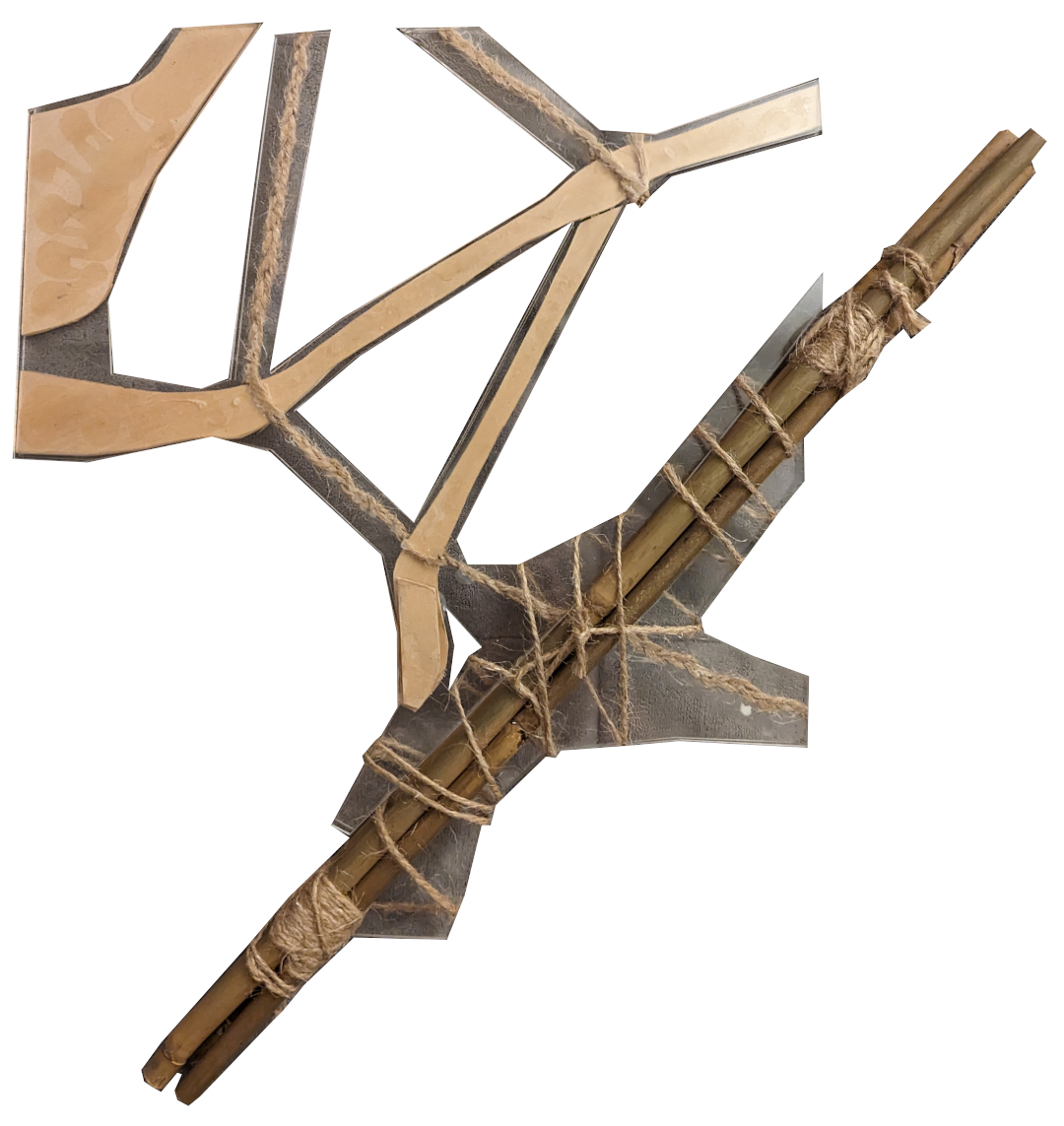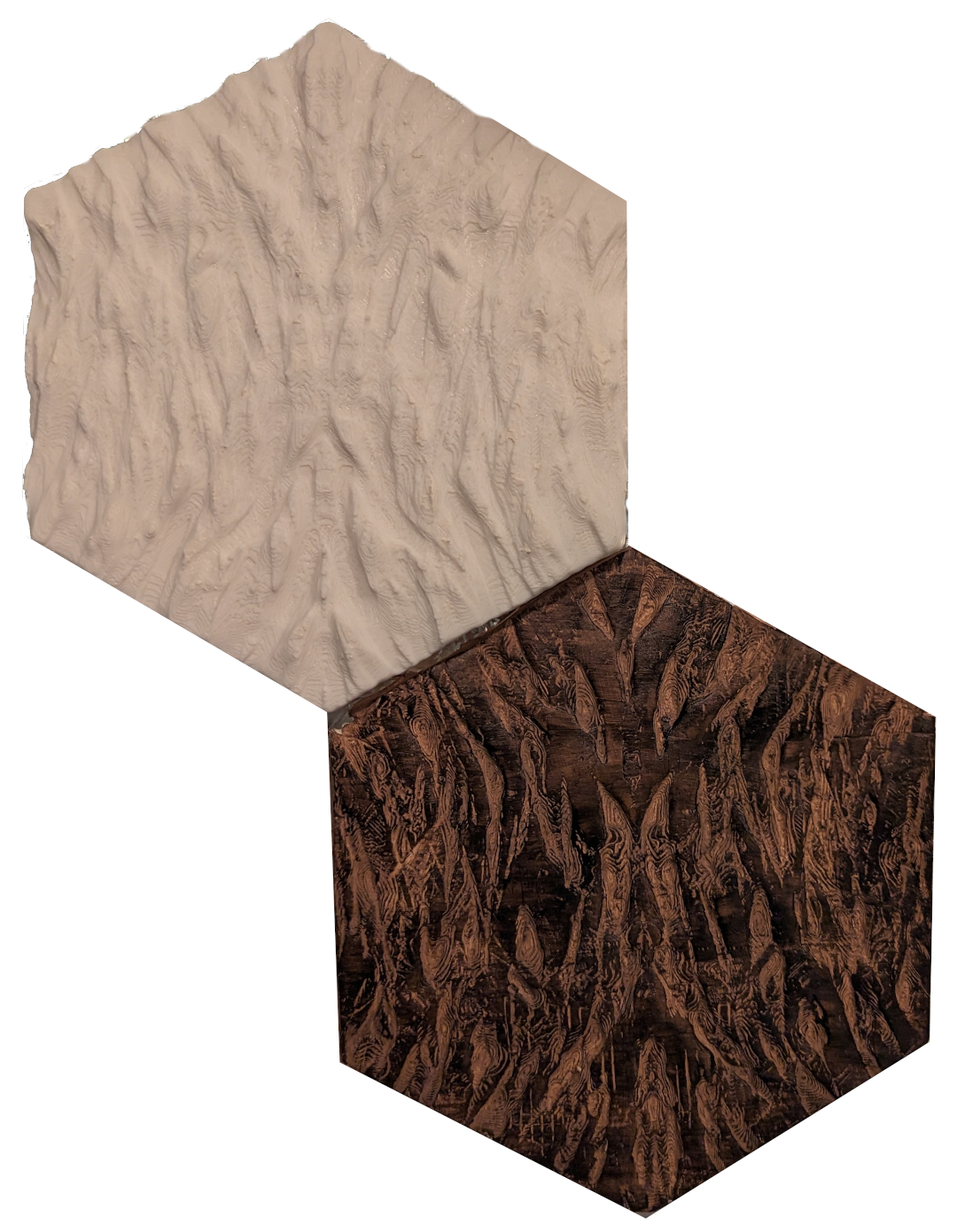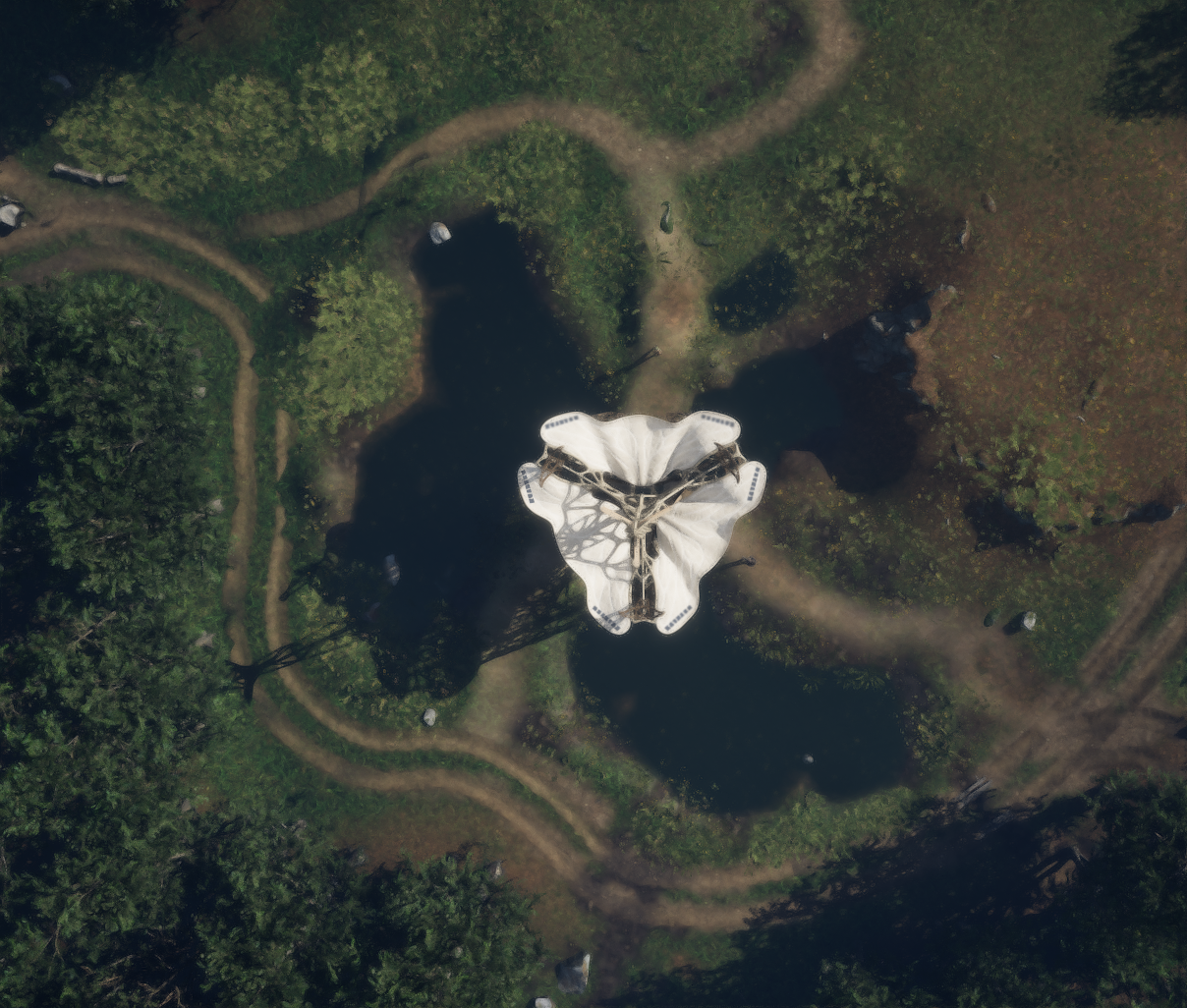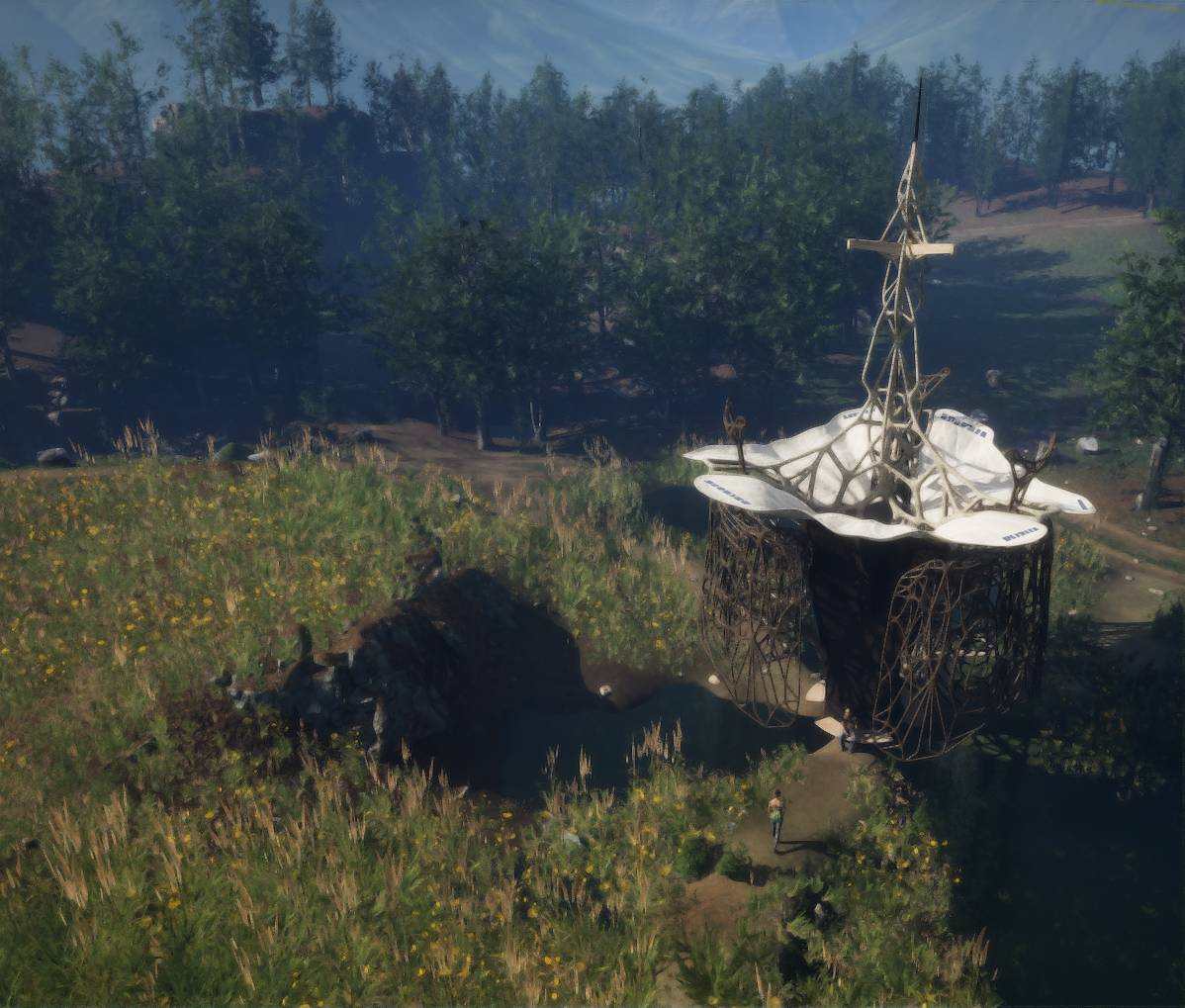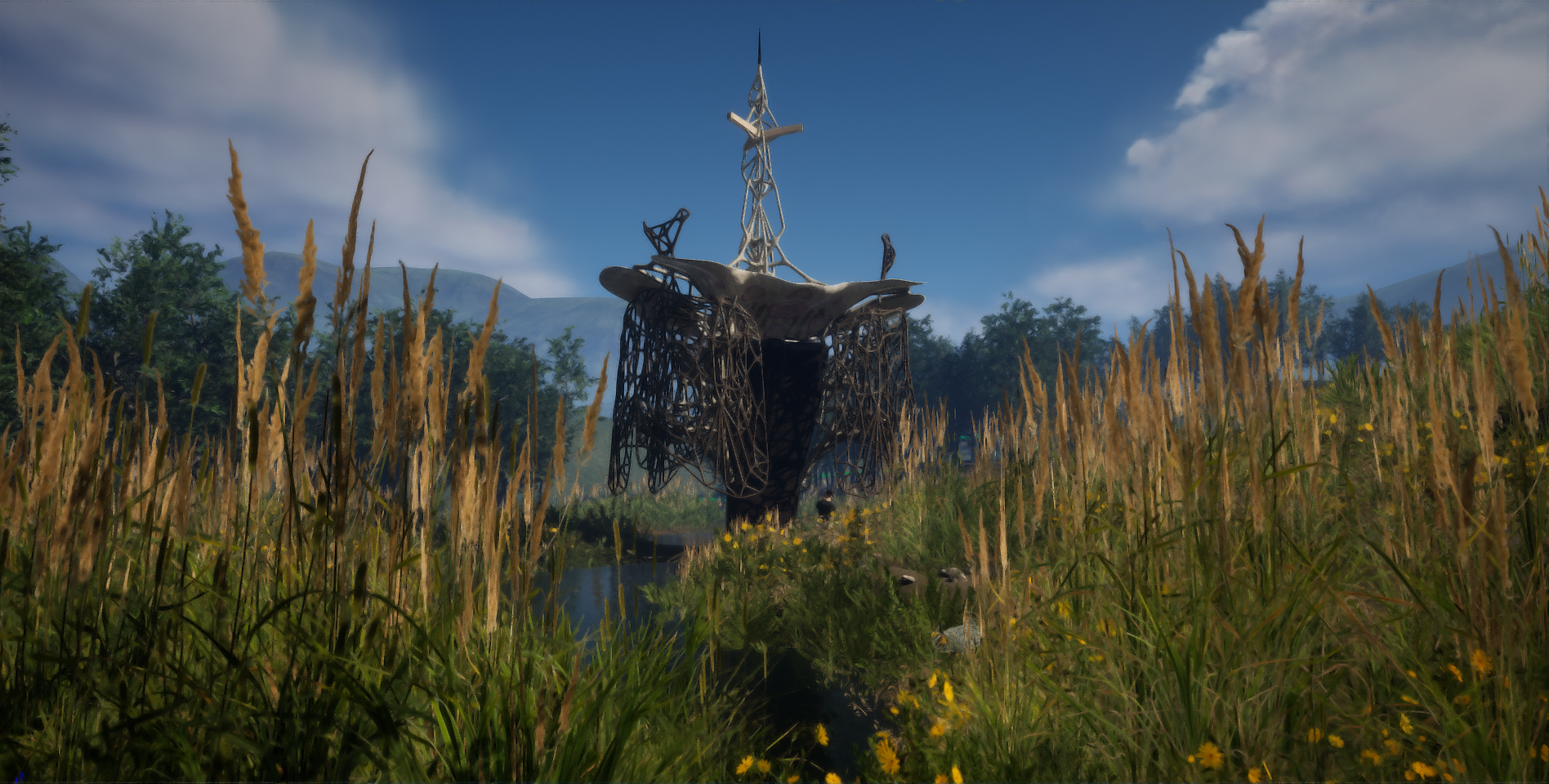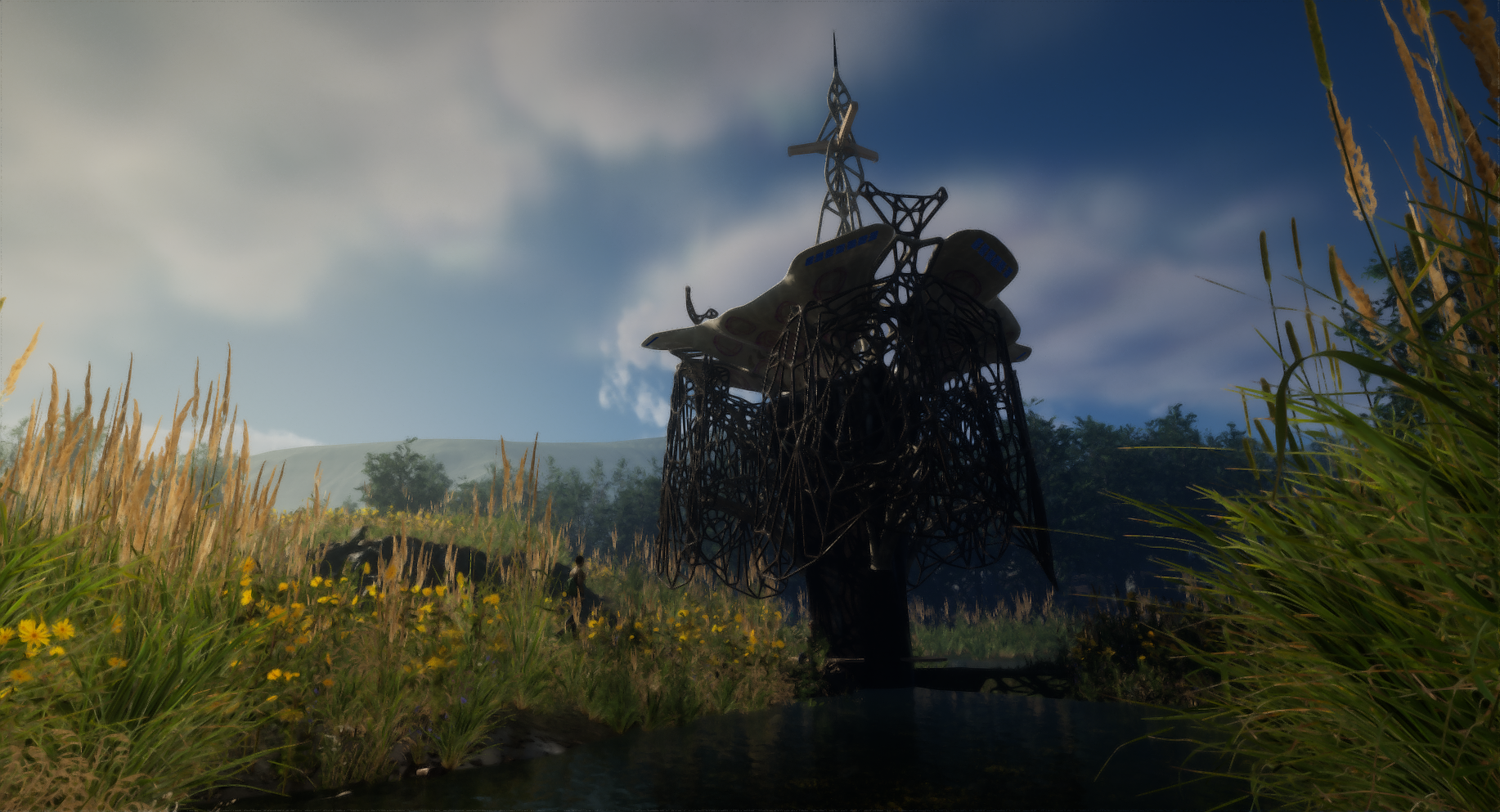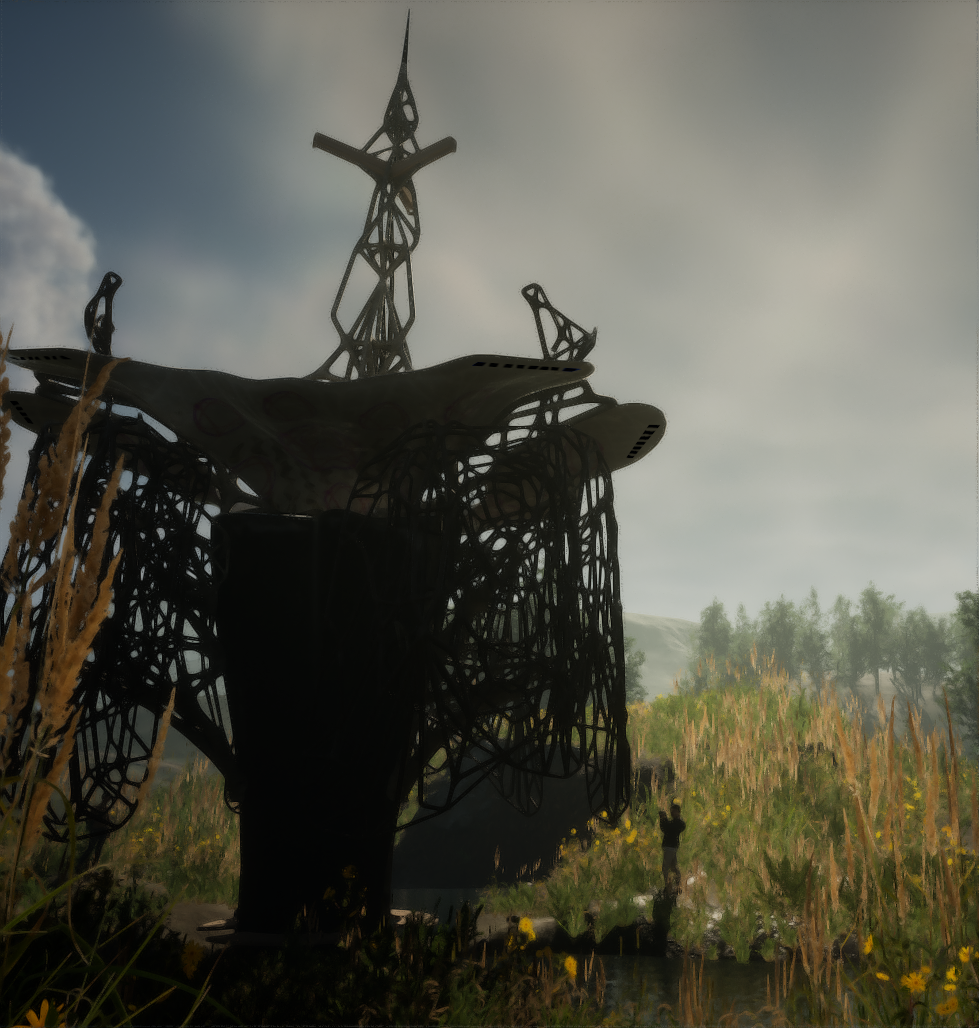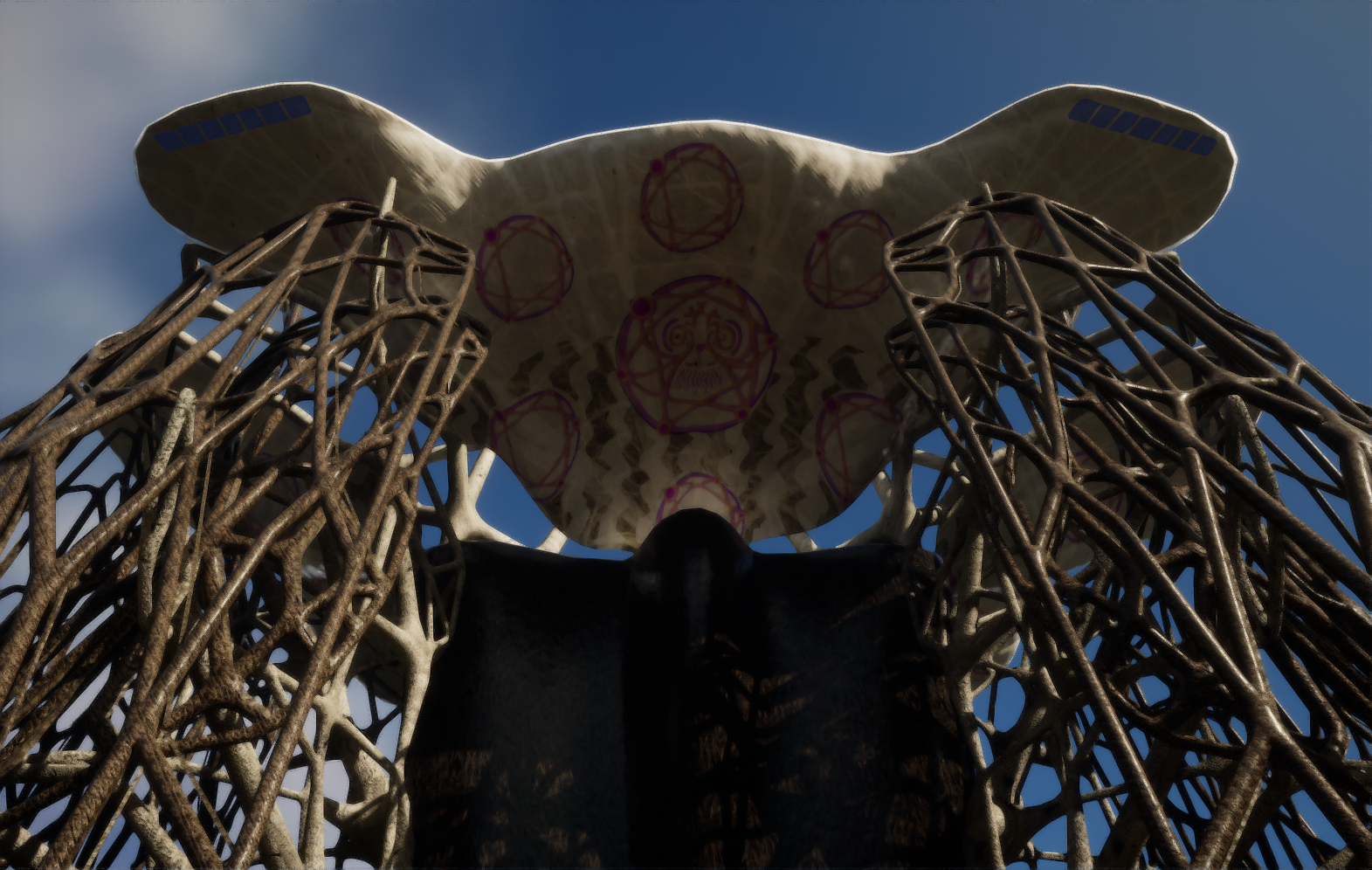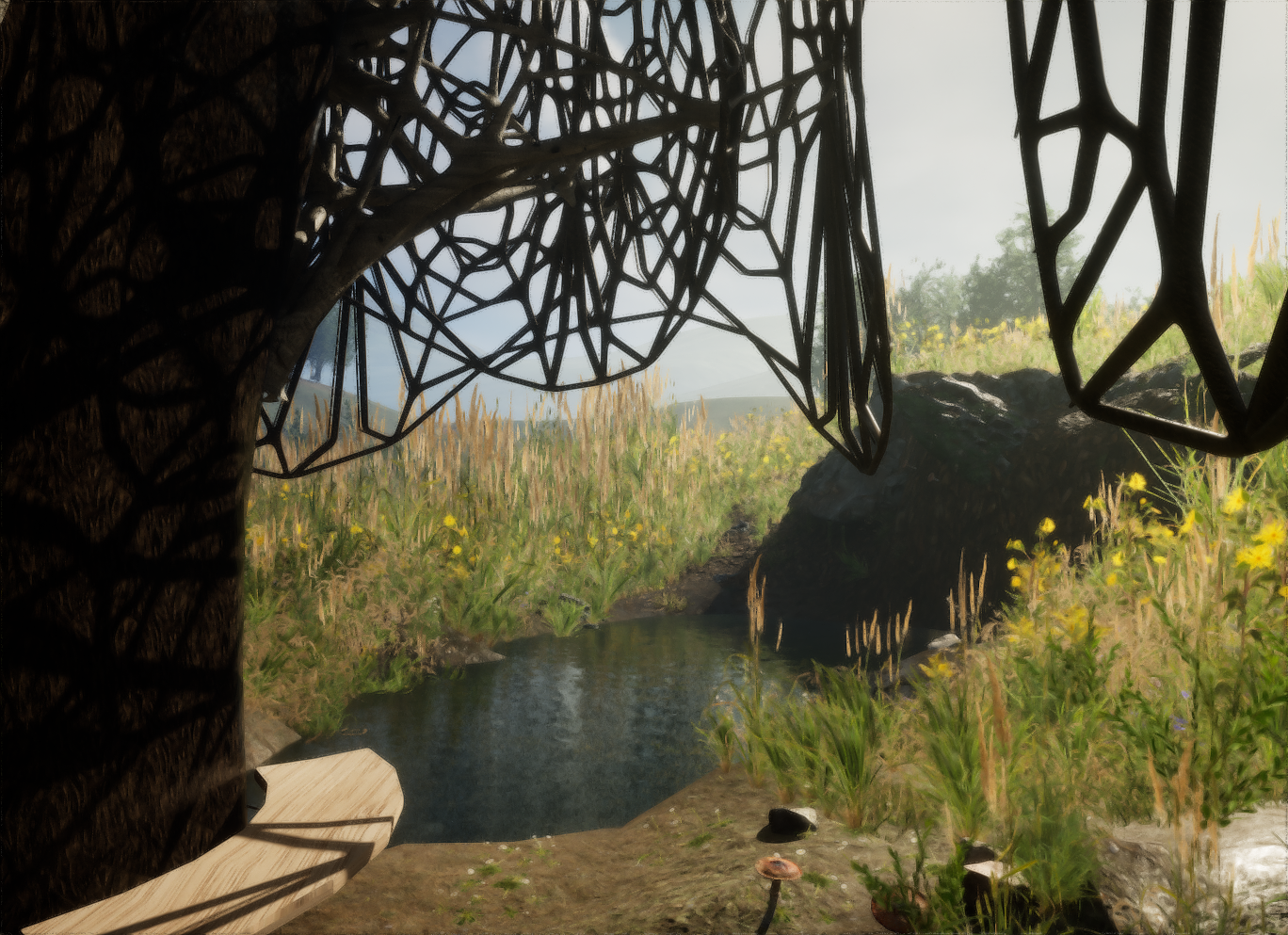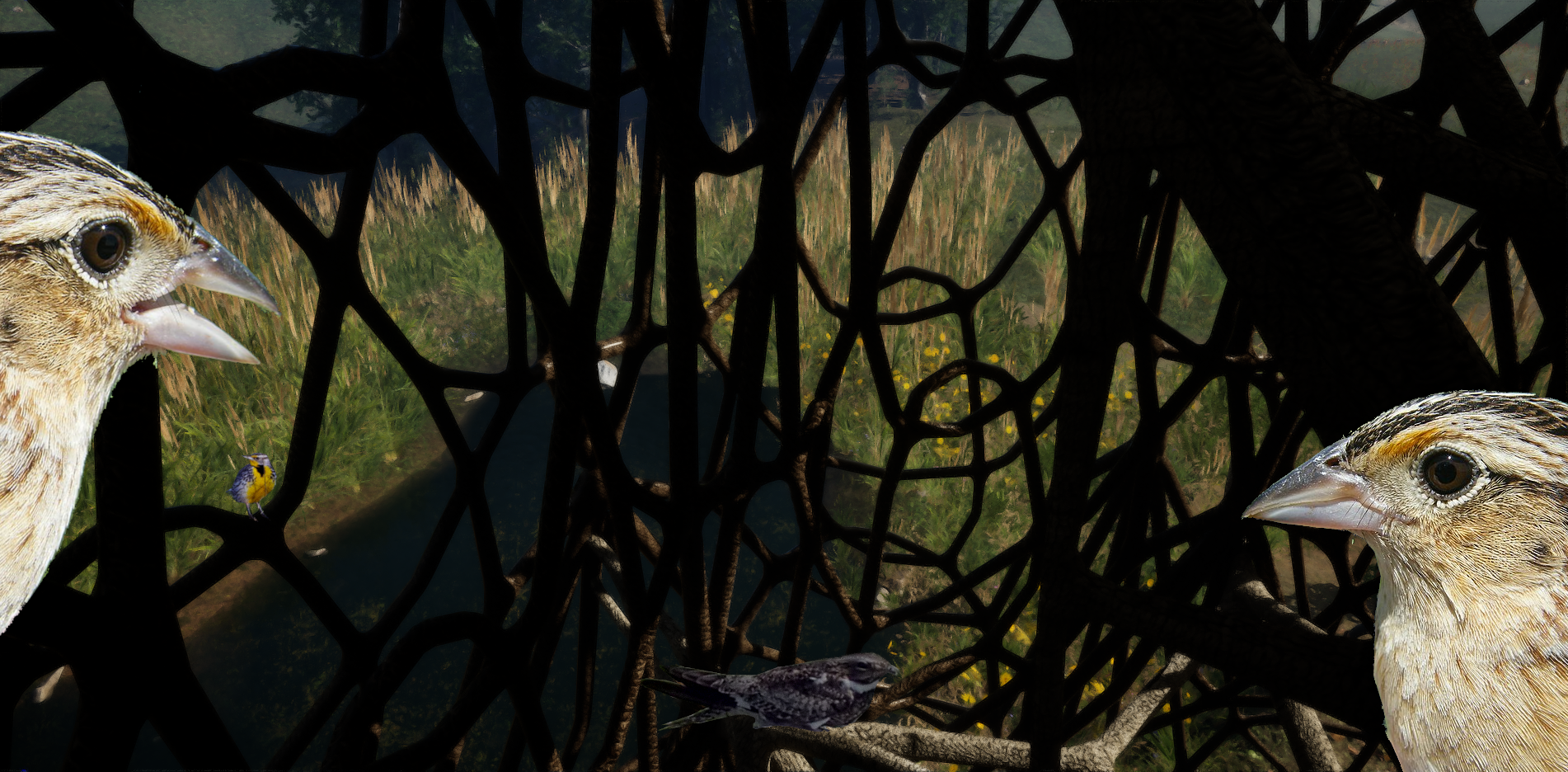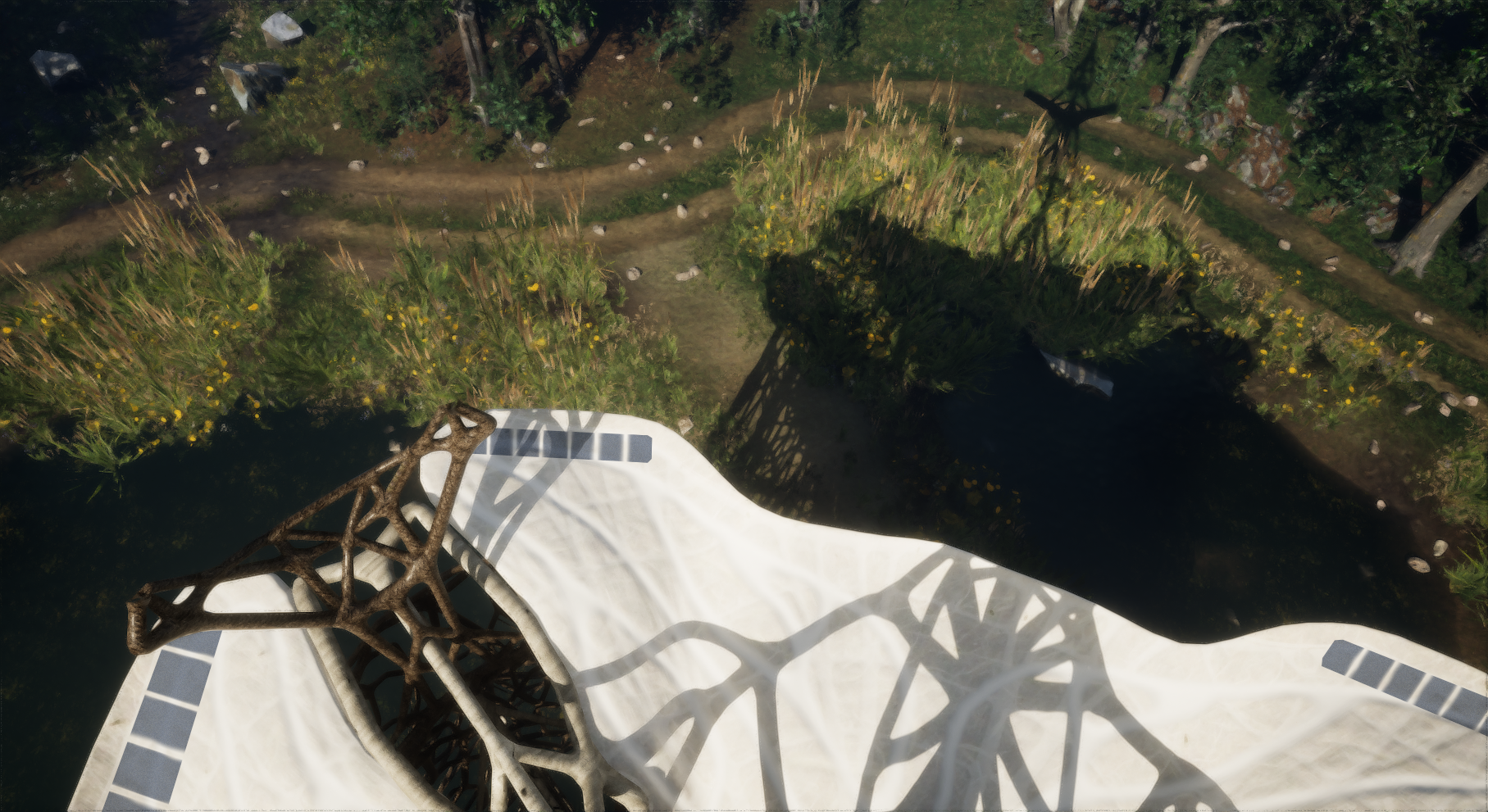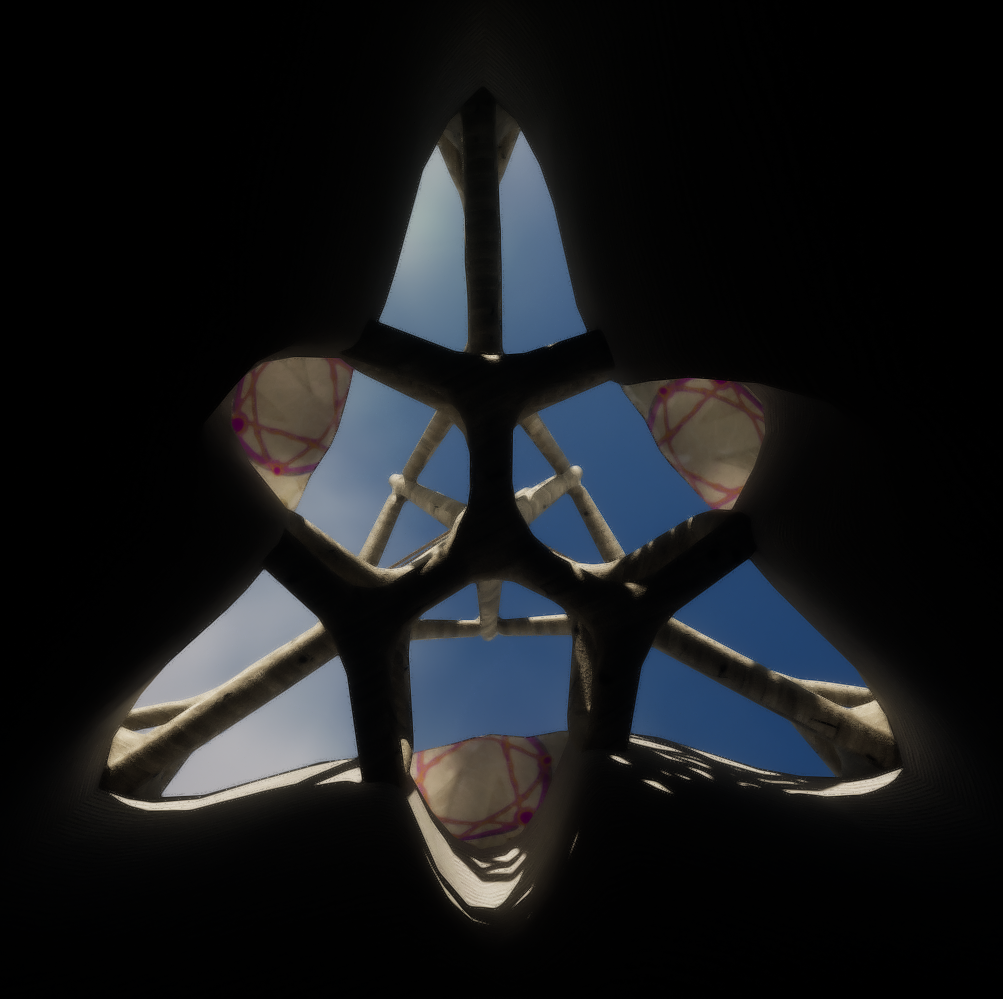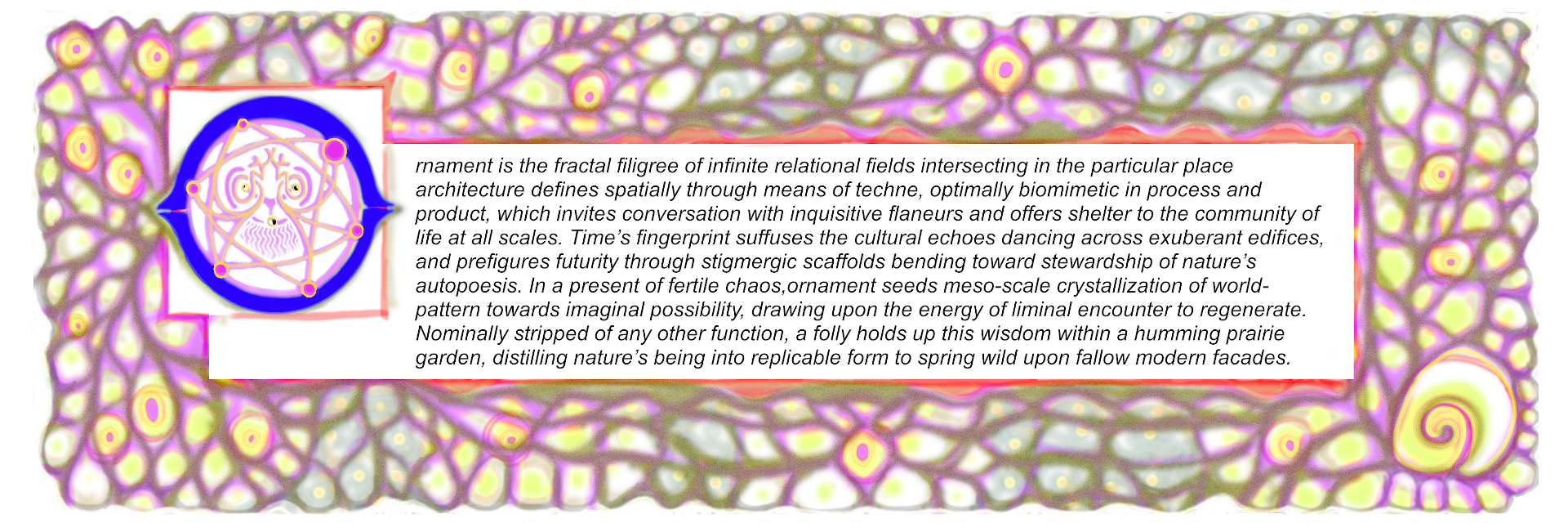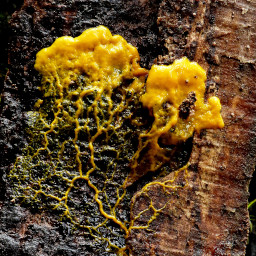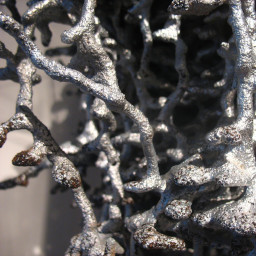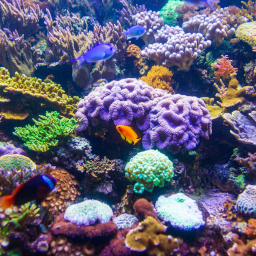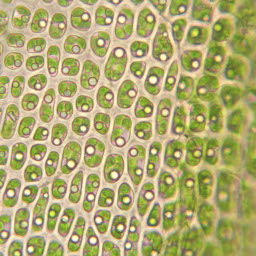Creating Conditions Conducive to Biomimicry
Architectural Worldbuilding
beWilder World seeks a praxis mundi centered on biomimicry, using the virtual seed of game design to integrate the wild into protopian cities.
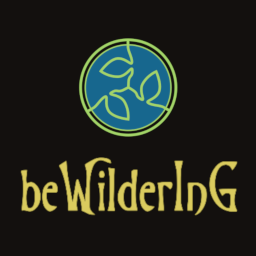
beWilderInG
beWilderInG is the latest project exploring agentic design with an emphasis on Intelligent Gardens. By painting in information about your yard, native plants can help you lay out your garden by moving towards the locations they prefer. Try it for yourself by clicking the icon above!

beWilderMint
beWilderMint showcases the first prototype for an agentic design system, with several abstract sample scenarios demonstrating potential applications. Feedback from this prototype led to the creation of beWilderInG. Try it now using the logo above!
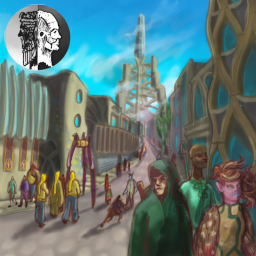
Janus
Janus is a speculative biomimetic worldbuilding project. By operating in an imaginal frame and playing a role in an imagined world where biomimicry is integrated holistically and commonplace, creative risks become possible to explore new architectural potential where otherwise concerns about societal constraints might obscure innovative solutions. Feel free to check out more on the youtube channel, linked at the header.
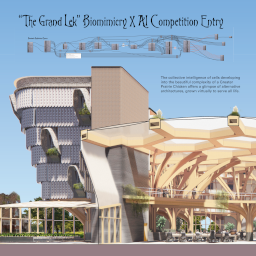
Biomimicry x AI
This competition hosted by Never Enough Architecture in collaboration with the Antoni Gaudi Foundation provoked explorations of Artificial Intelligence as a catalyst for biomimetic design in the realm of the built environment. This entry focused on lessons from the Prairie Chicken to develop a regional Biomimicry Center.
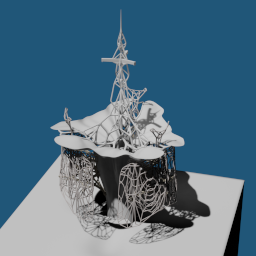
Lightning Folly
As a part of the Ornament Is exhibition in Chicago, the Lightning Folly explores one avenue to reintroduce ornament as functional for beings living at diverse scales, and as part of the transmission of cultural narratives. The structure includes a lightning rod, and holds water in a 3d printed tower to replenish the prairie around it during droughts. Reinforced grass rope lattices and fabric form concrete trussing provide habitat for birds, and fibergrass panels with ricepaper collage catch water while offering shade to passing hikers.
About Us
Philosophy
beWilder World envisions a possible future in which design is inclusive of all life. We embed intelligence into the patterns of the world, digitally growing solutions to diverse challenges to create conditions conducive to life. Our theoretical framing fuses a guiding spirit of spatial poetics with imaginal ornamentation accomplished through biomimetic techne. We believe deep patterns are transmedia projects rippling from the heart of nature out into the digits of technology and beyond to the blossoming of virtual realms. Our unique design process offers collective insight into the challeneges you face, from company organizations to products and buildings. Let us know how we can help!
Meet the Team
Designers
beWilder World aspires to be a haven from thoughtful designers who seek to make a difference for the natural world by leveraging cutting edge technology. As we grow, we look forward to building a transdisciplinary team to serve our broad clientele.
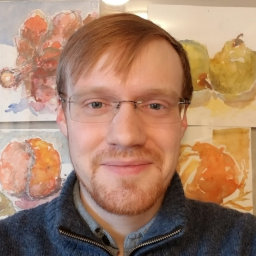
Thomas Boyster, AIA LFA
As a licensed Architect in Illinois with 12 years of experience in the architecural industry and 17 years working in game design, Thomas integrates the expertise earned in an MSci in biomimicry with practical design experience and facility with systems of interactive communication to solve challenging problems across the built environment.
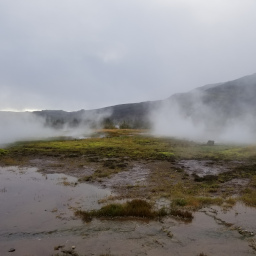
Nature
Collaborator and Font of Wisdom
Here at beWilder World, nature isn't an abstract. In all of our work, we make sure that Nature is on the team.
Slime Mold Colony
Collective Intelligence
Slime mold cells join and spread out while maintaining connections to neighbors to form a diffuse network, communicating when they find resources with a feedback loop to optimize nutrient flow to the collective.
Pharaoh Ant Nests
Stigmergy
Ants put down pheromones to communicate certain information to temporally distant colony members. The layers overlap and build in strength as more ants lay down more pheromones, building up an intelligent map.
Coral Reef
Niche Refugia
Corals grow skeletons in pursuit of greater surface area exposed to daylight. This proliferation of a variety of forms create spatial diversity to increase niche variety, supporting greater biodiversity resilience.
Multicellular Morphology
Self-Organization
Developing multicellular organisms inform geometry using their bioelectric fields. These interact with chemical gradients and cytoskeletal chirality to set patterns towards which cells then orient, move and specialize.
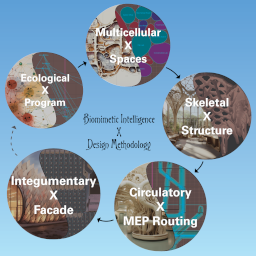
Artificial Intelligence
Draftsman
As a key component in serving diverse clients from all of life, AI allows virtualized agents to collaborate towards a more holistic design response.
Contact Us
If you'd like more information about our projects or availability, get in touch today.
